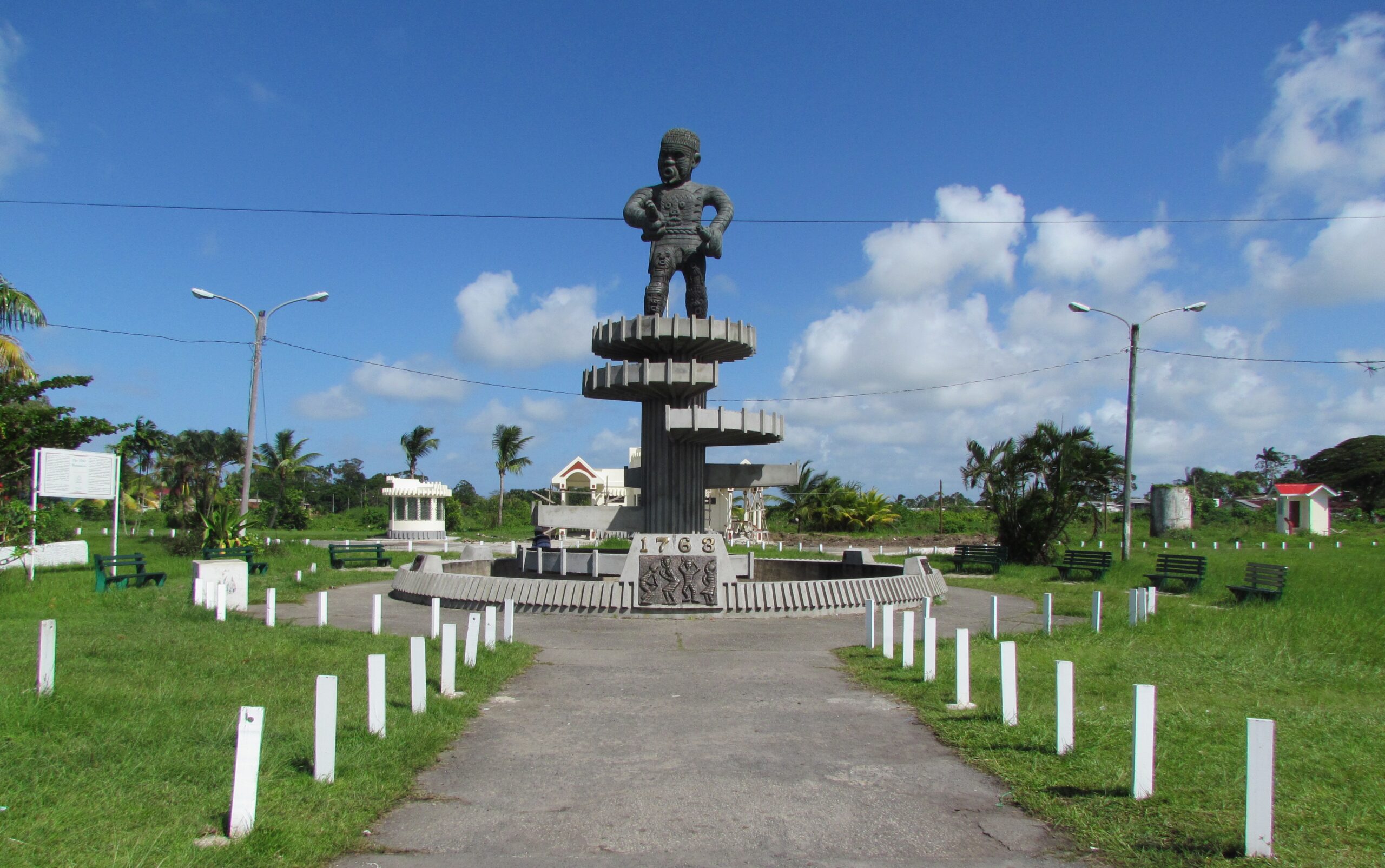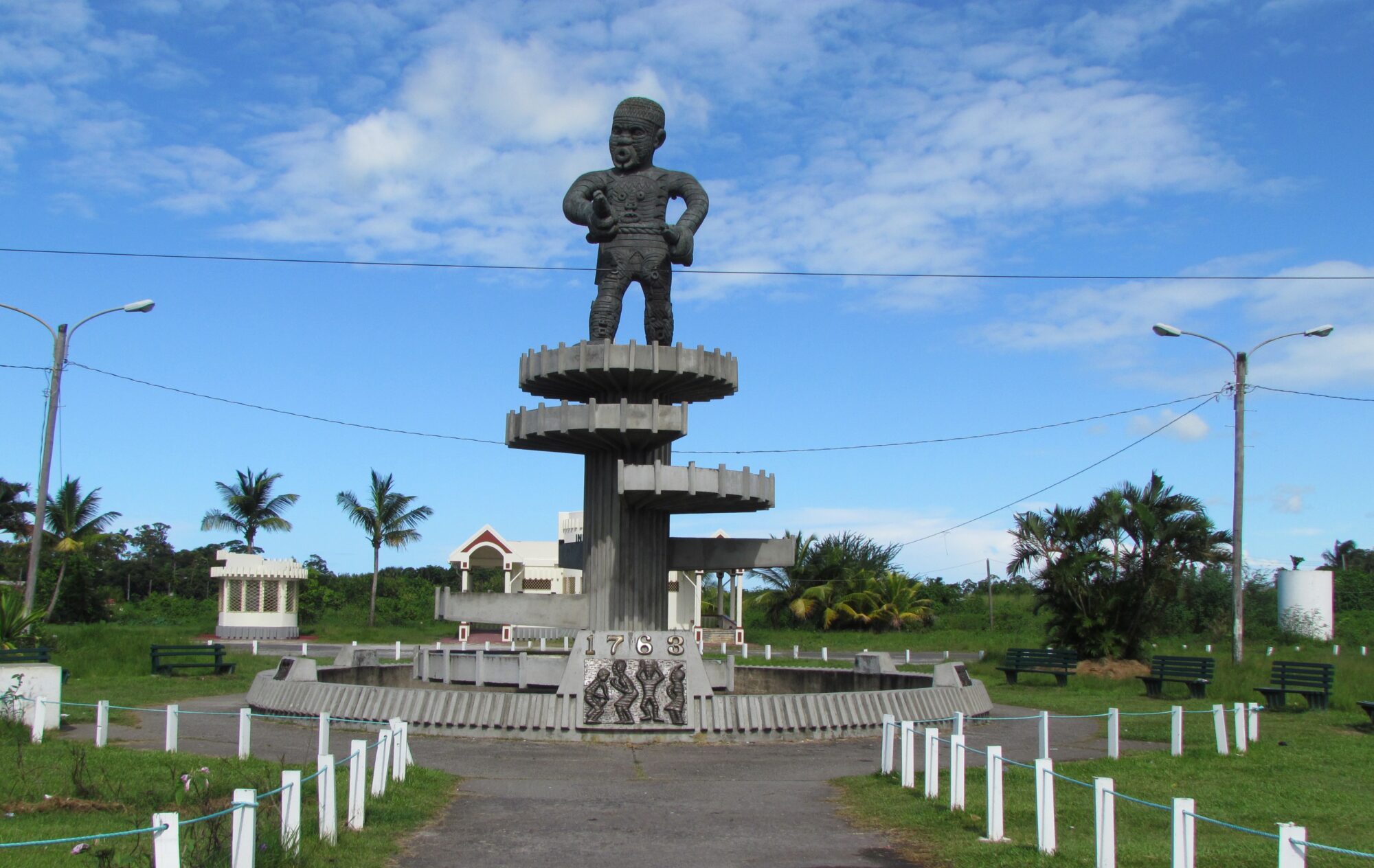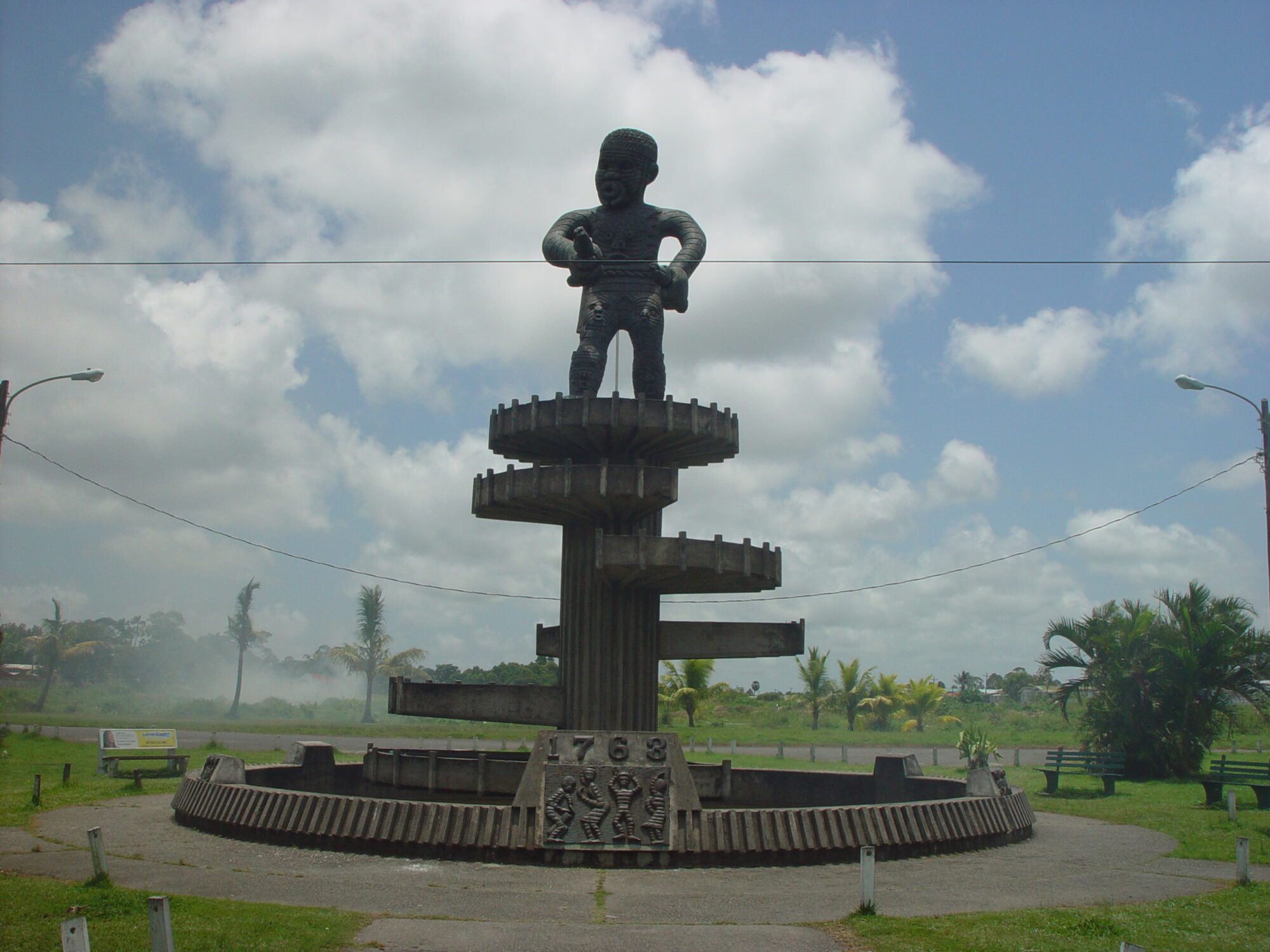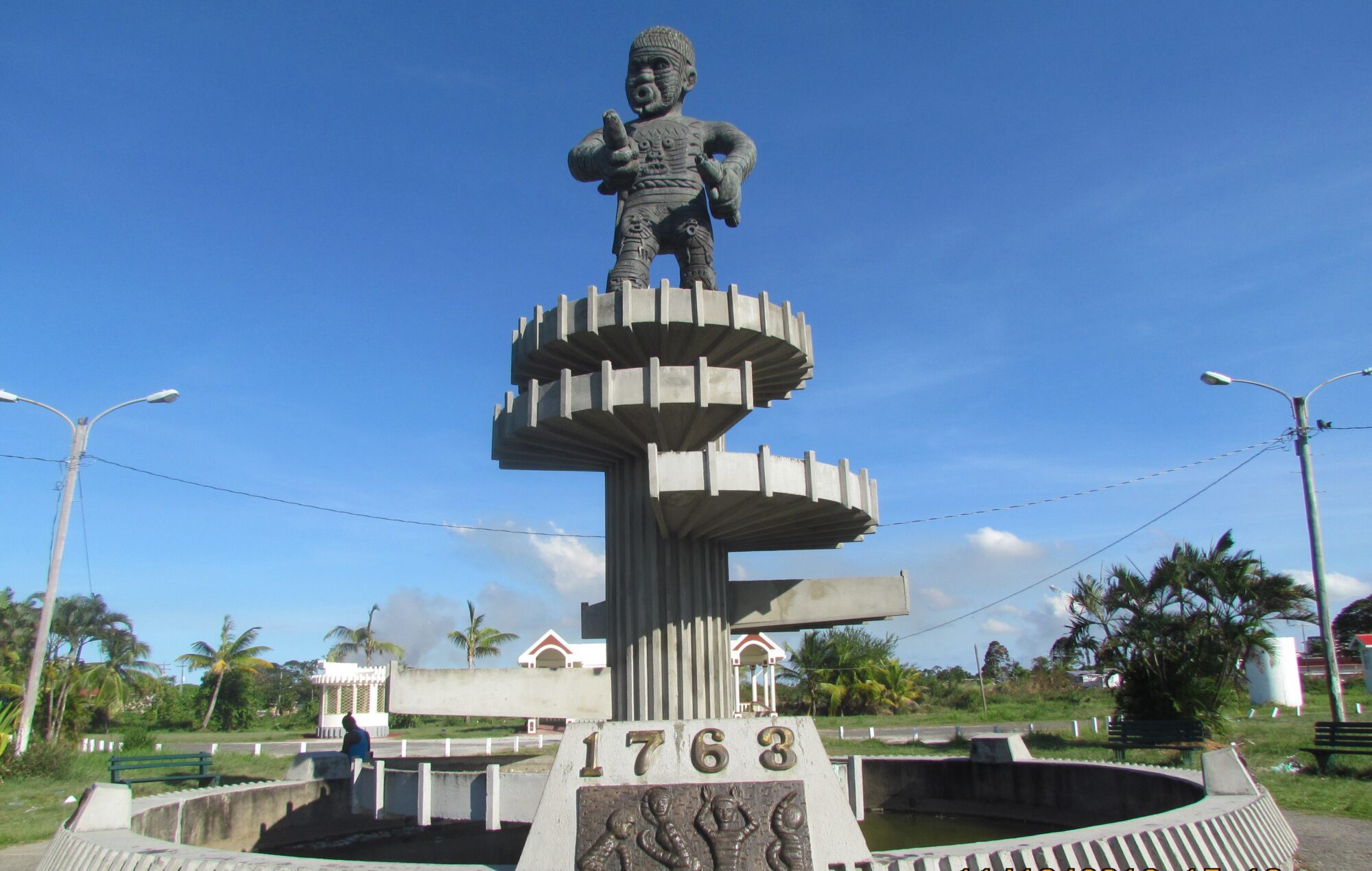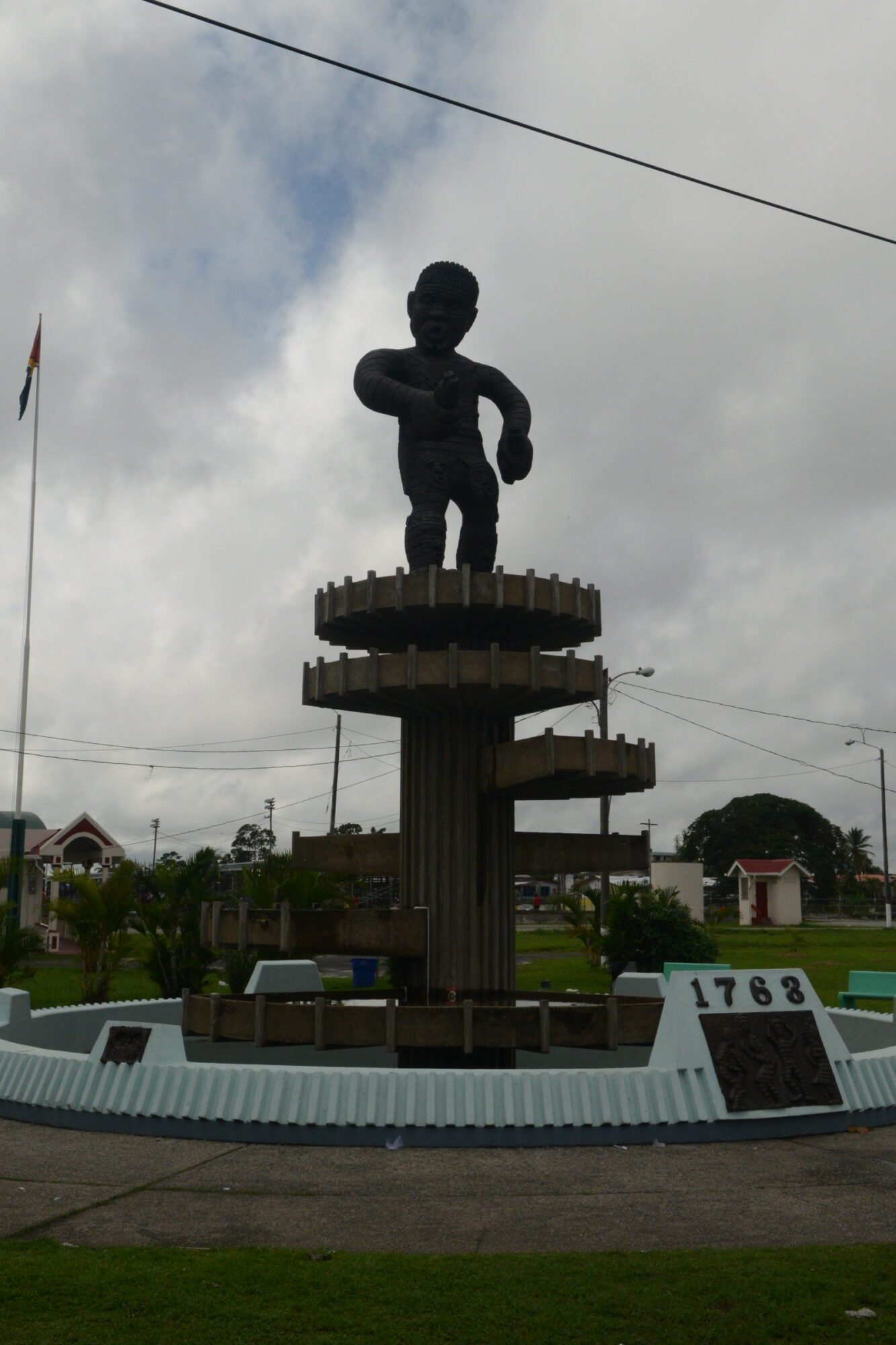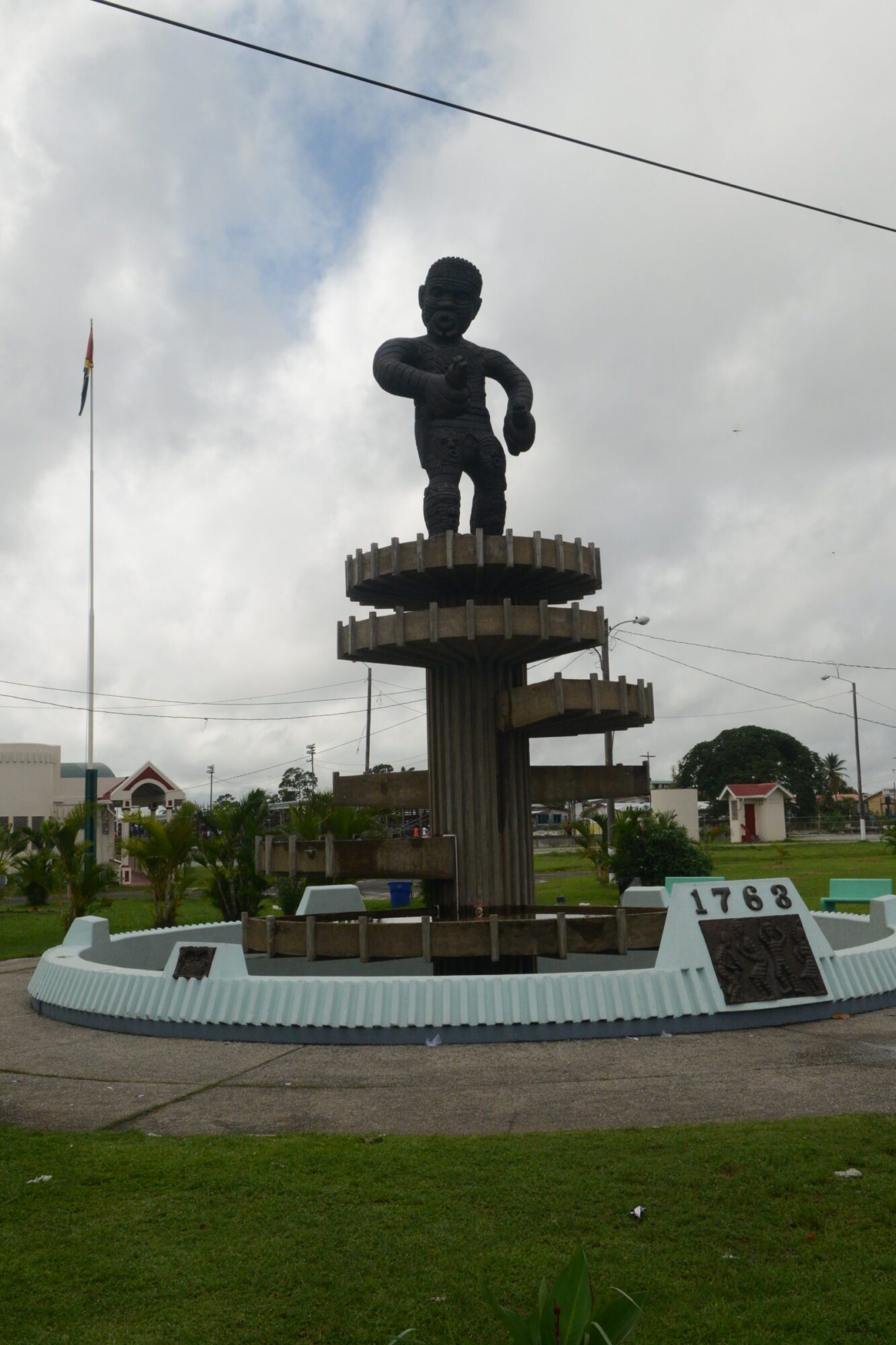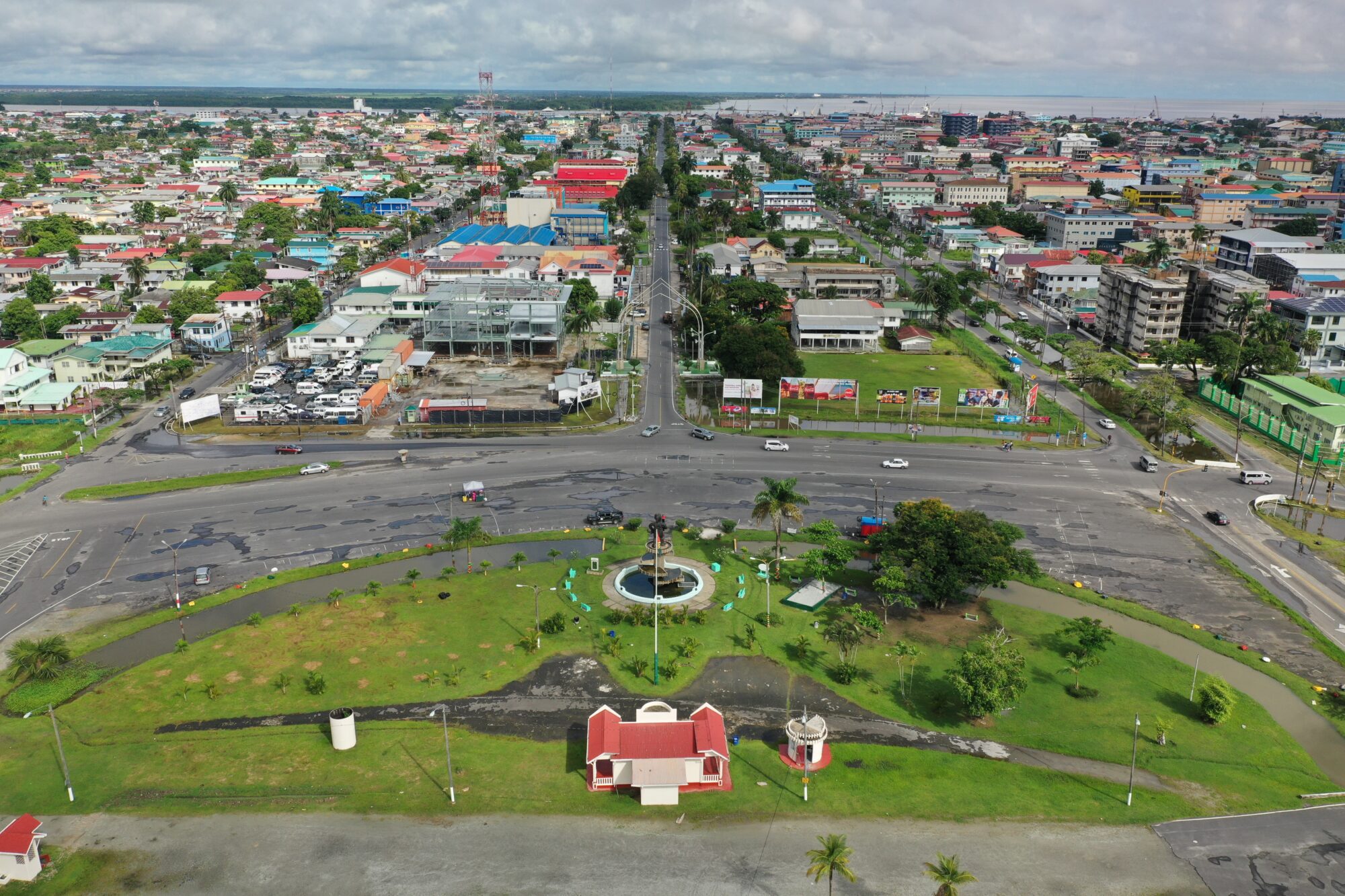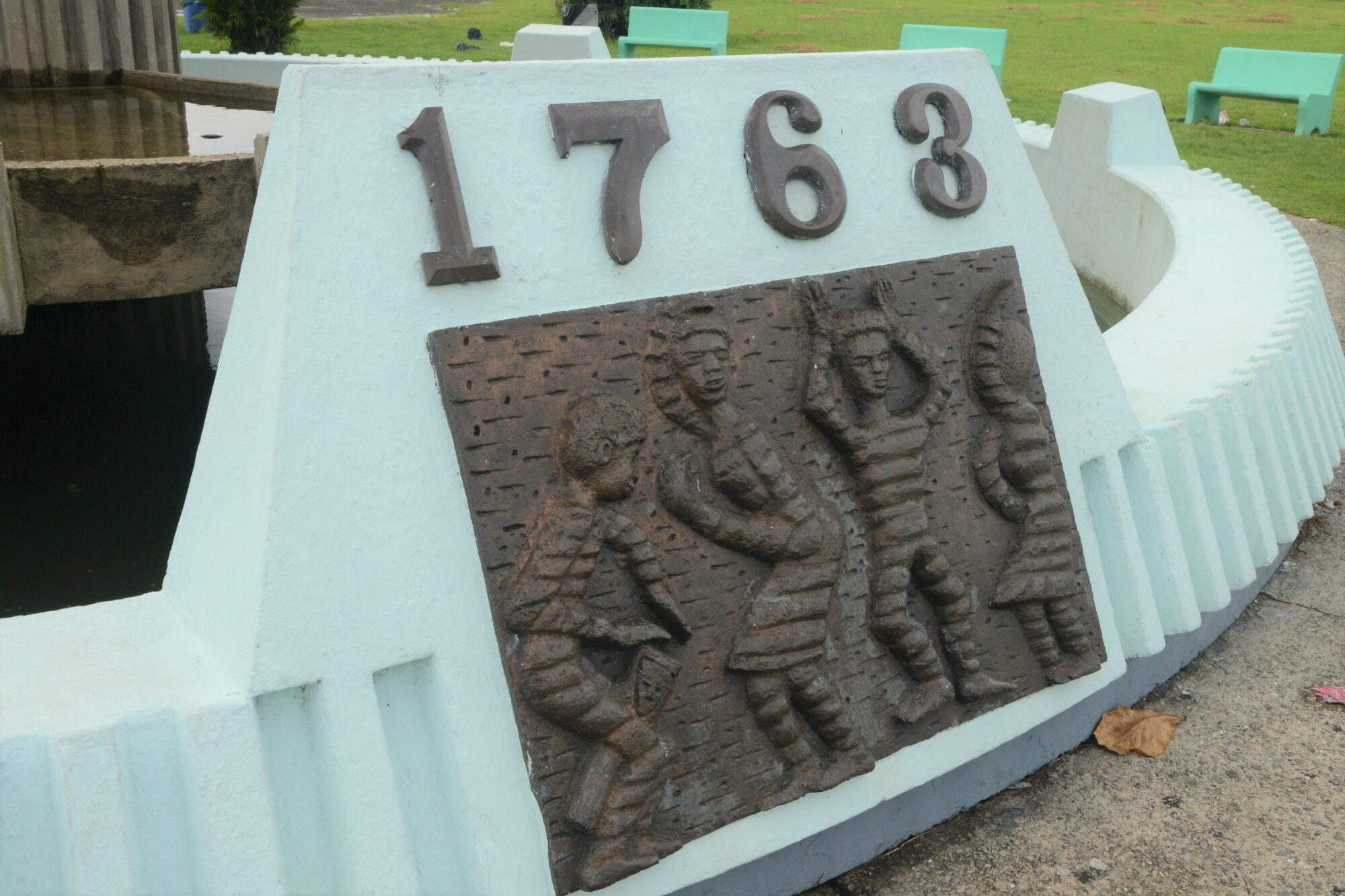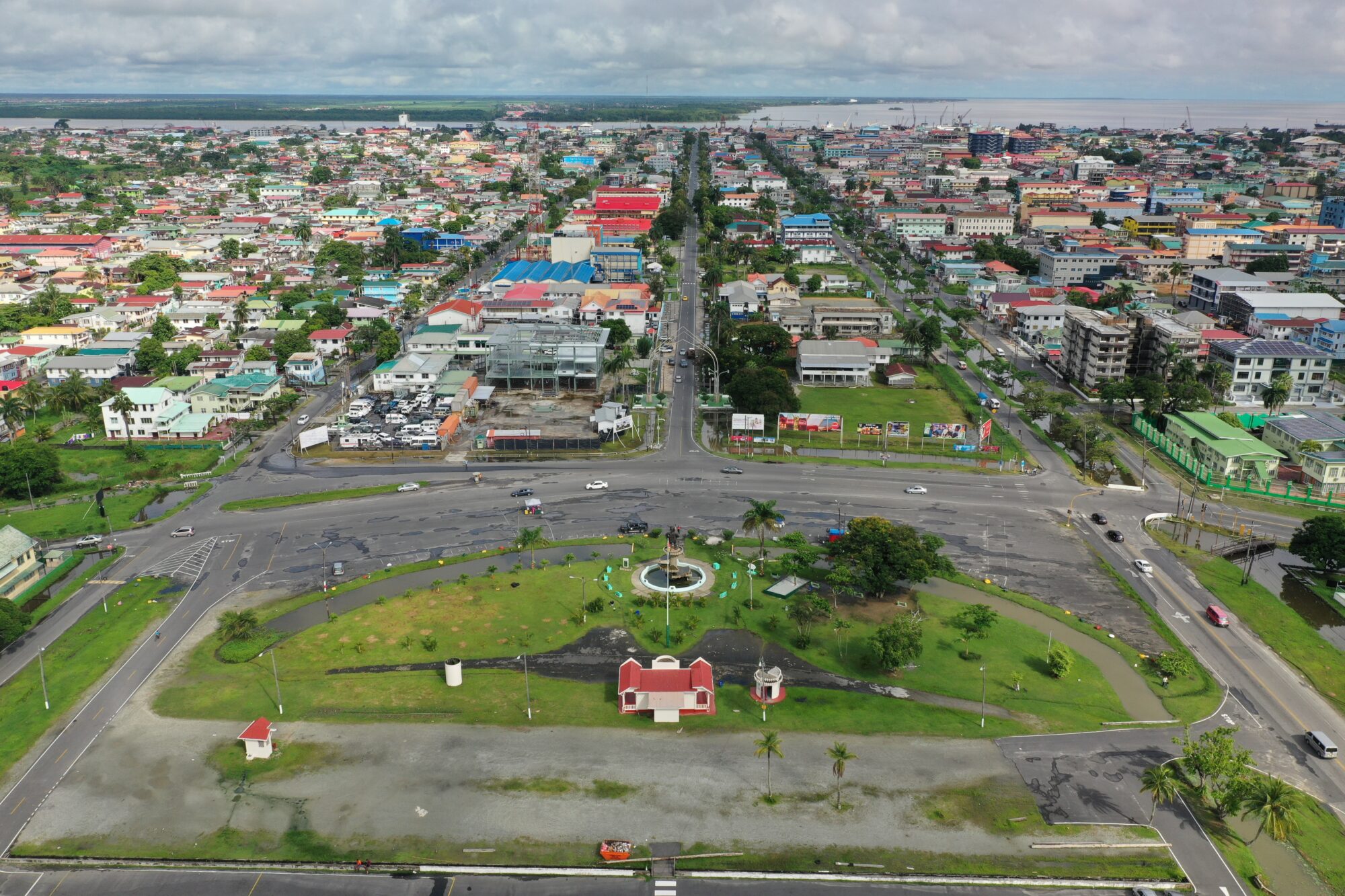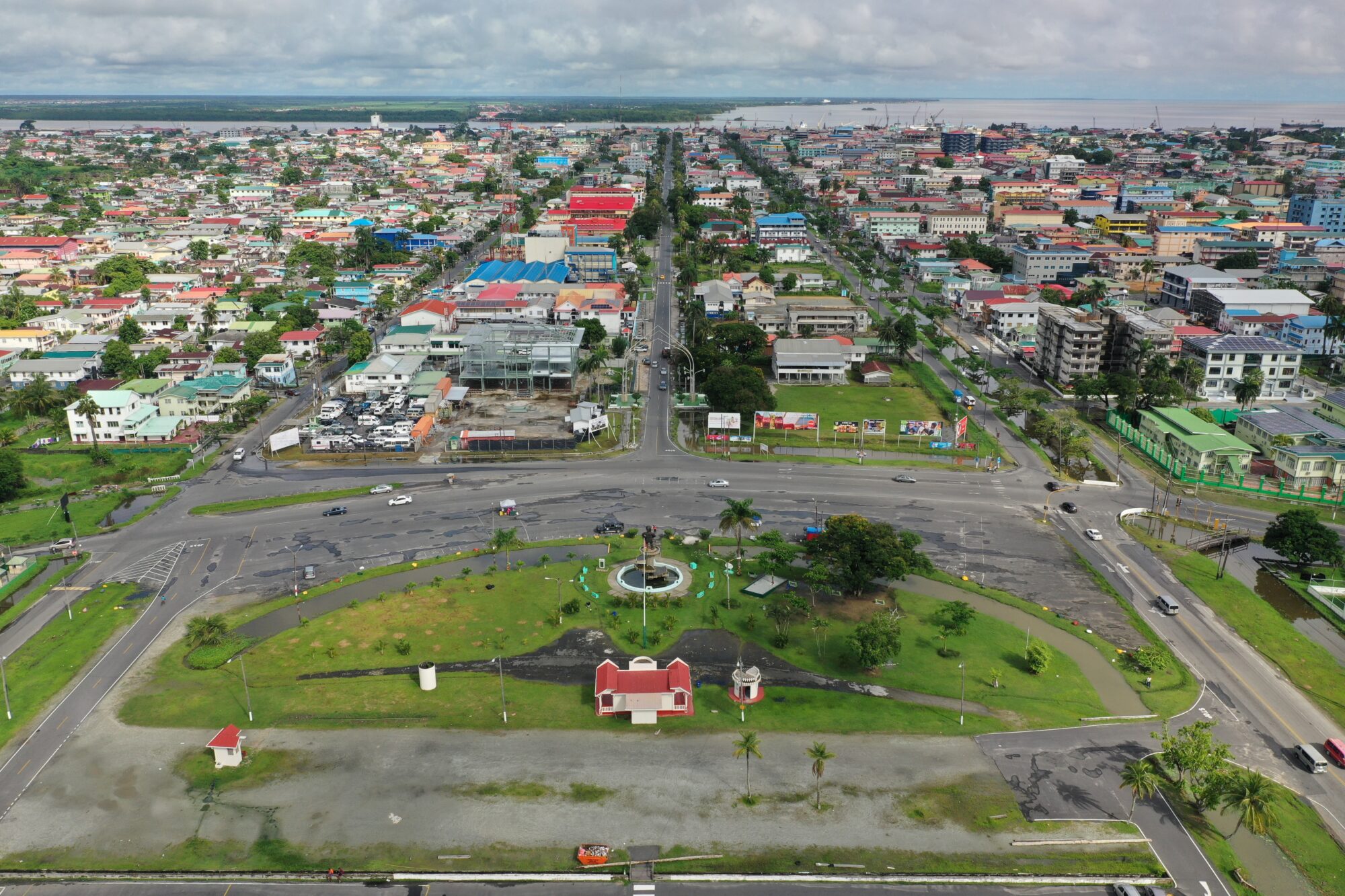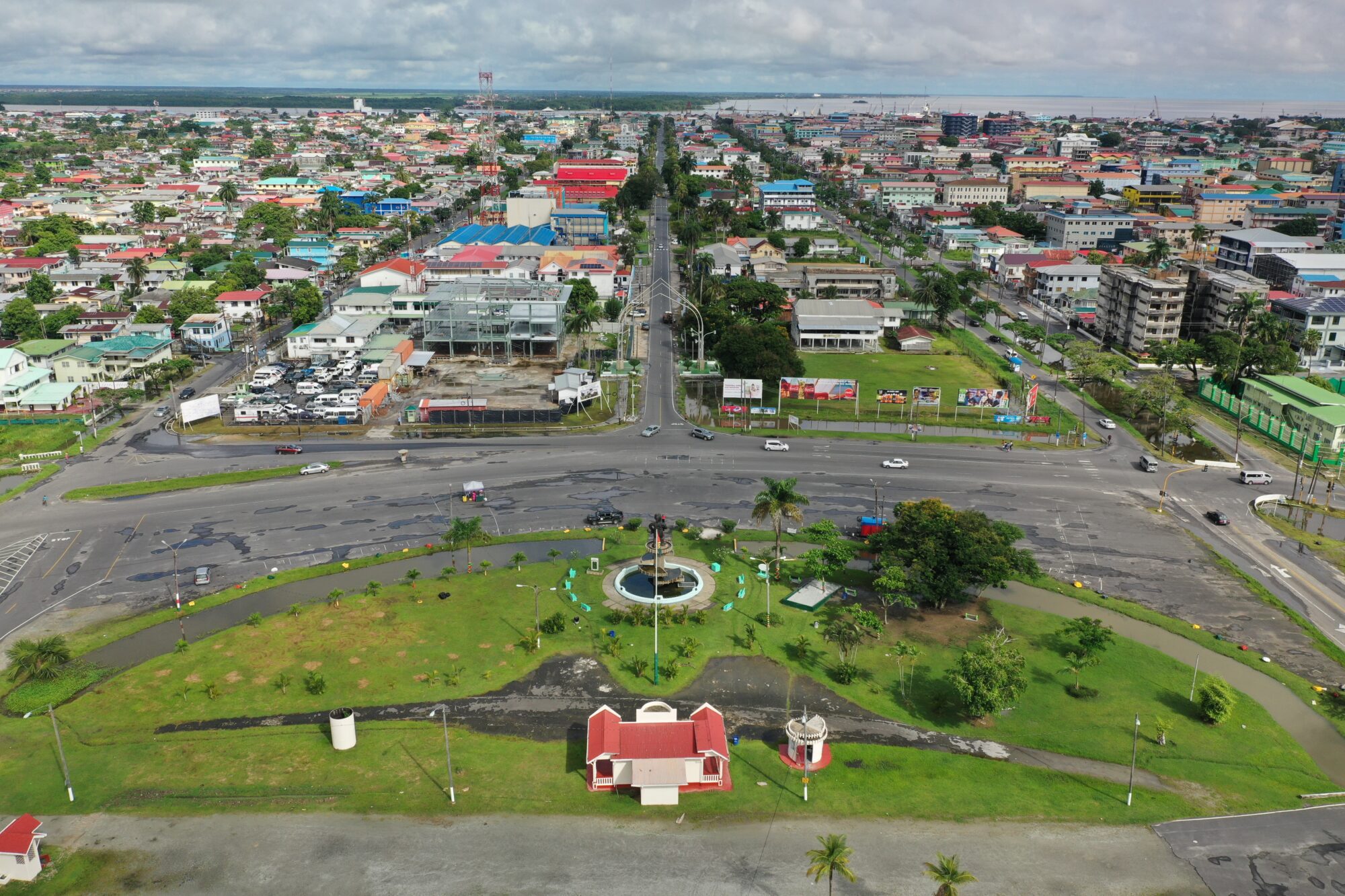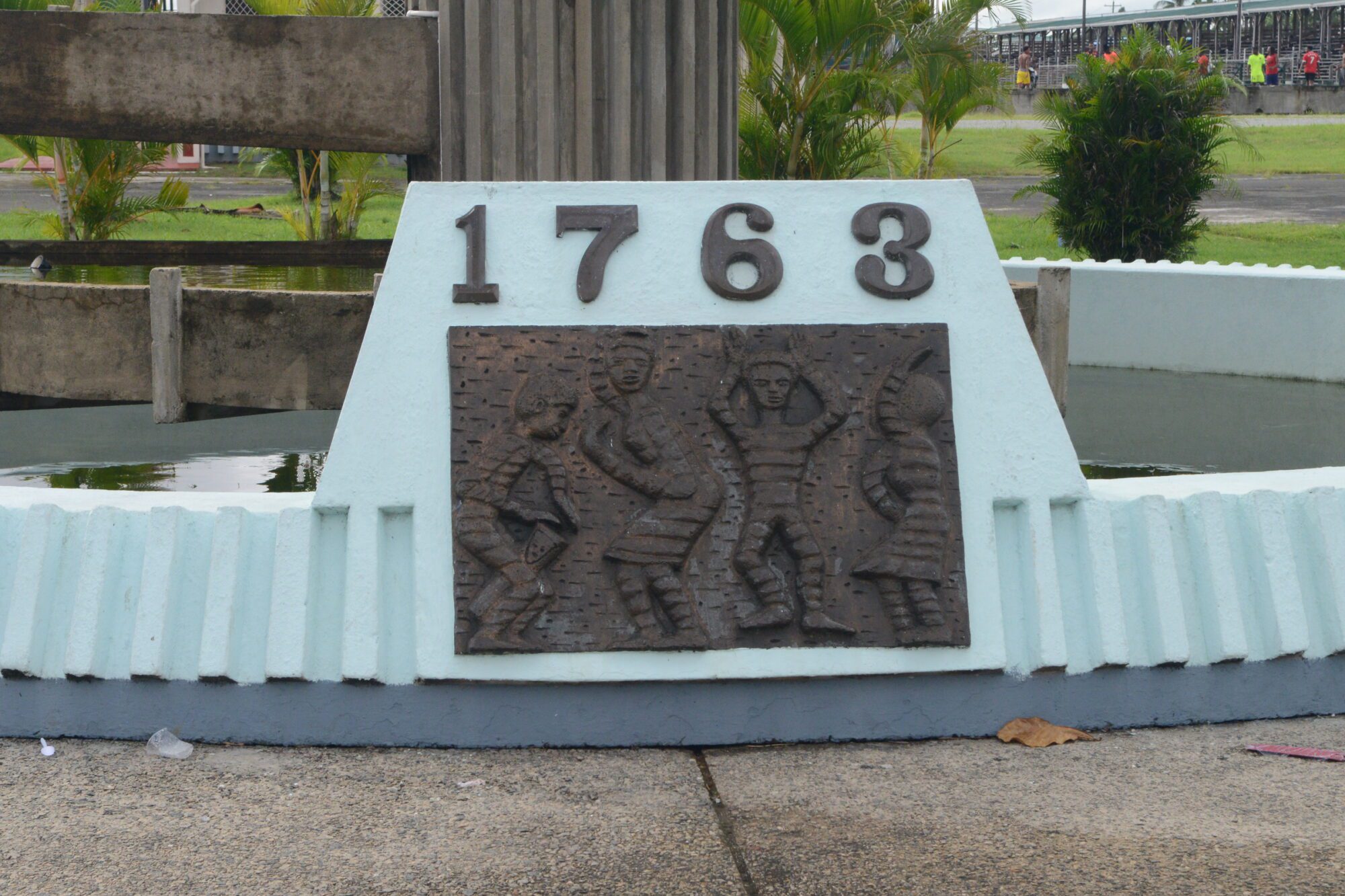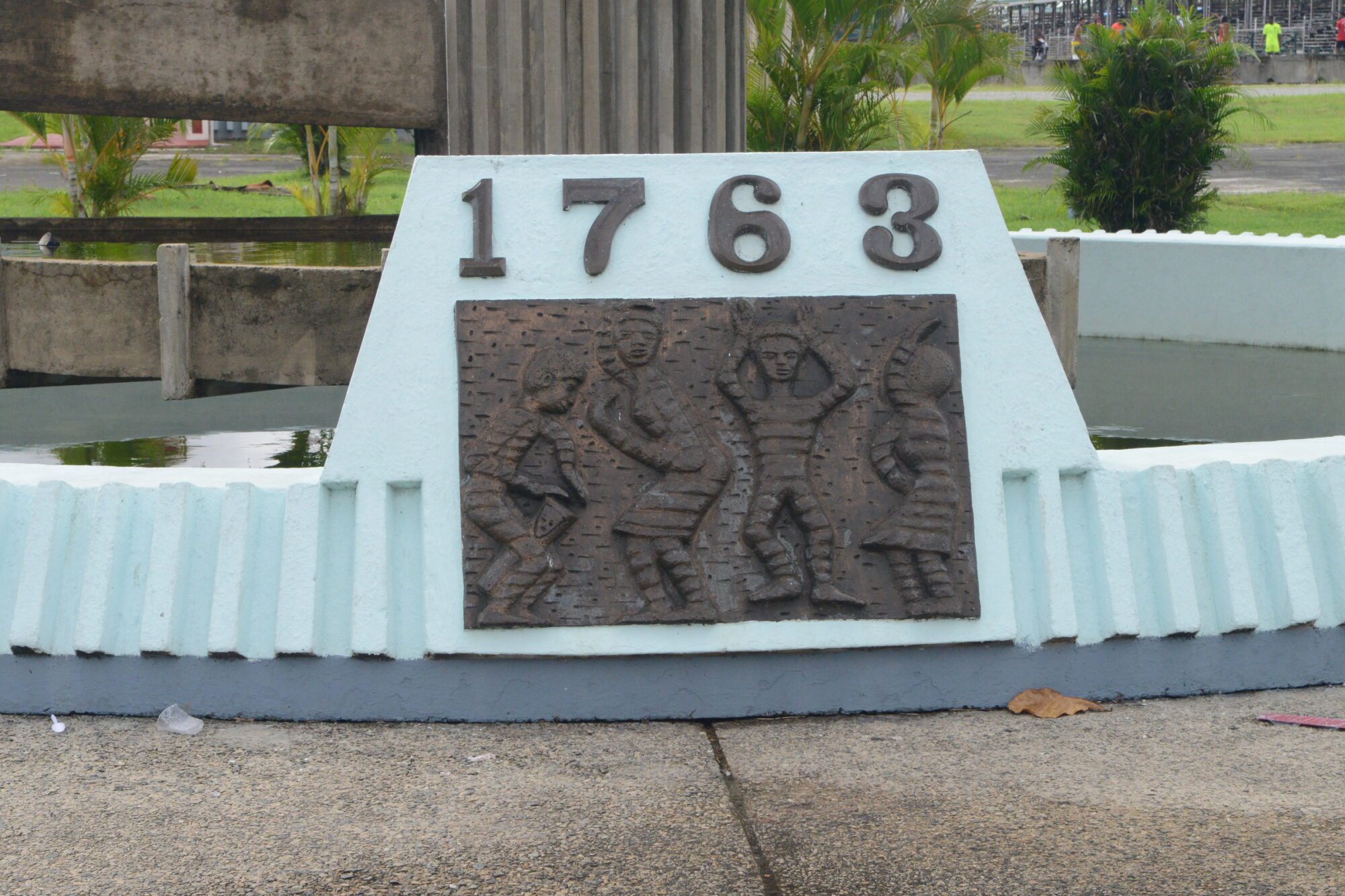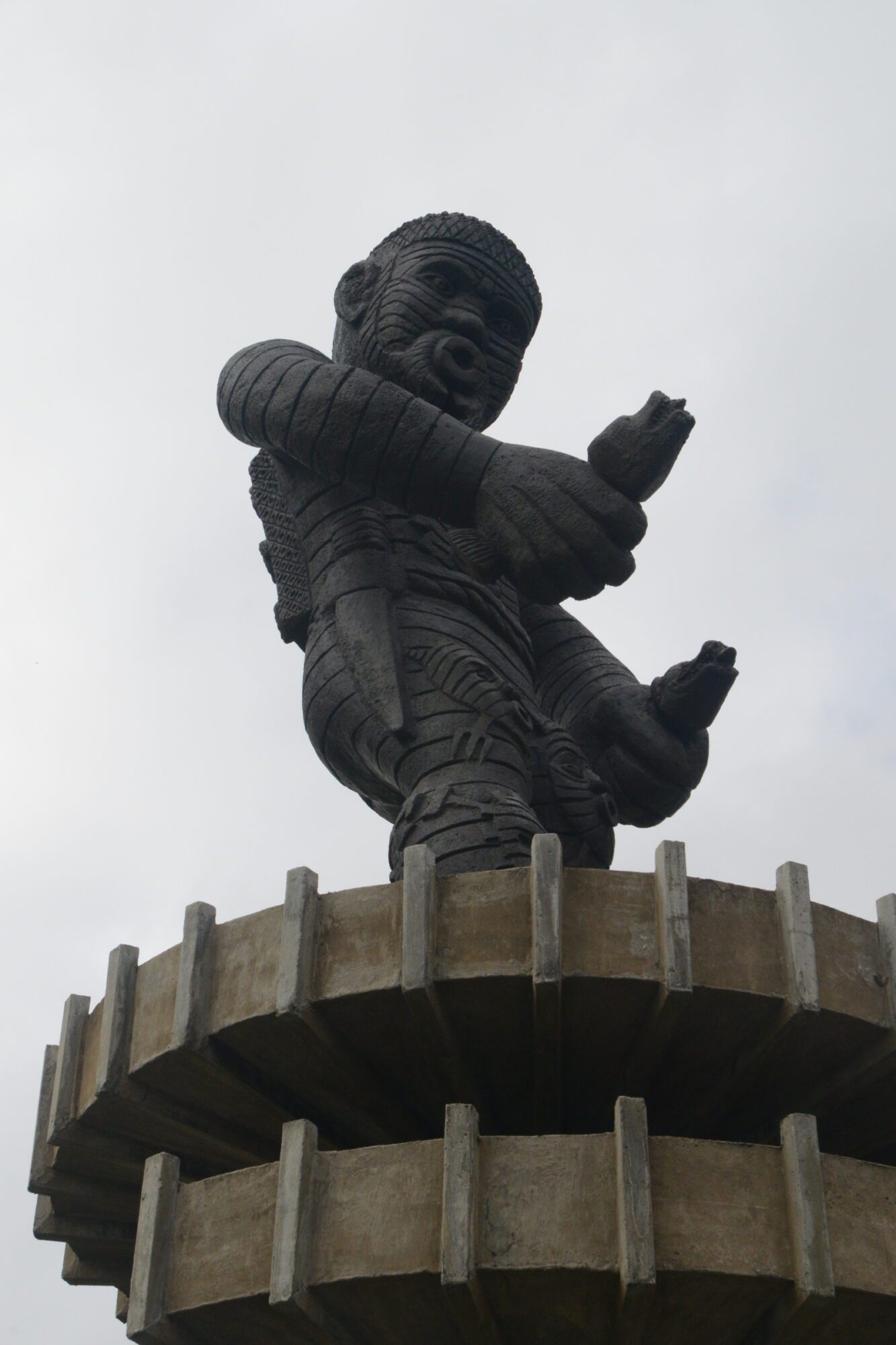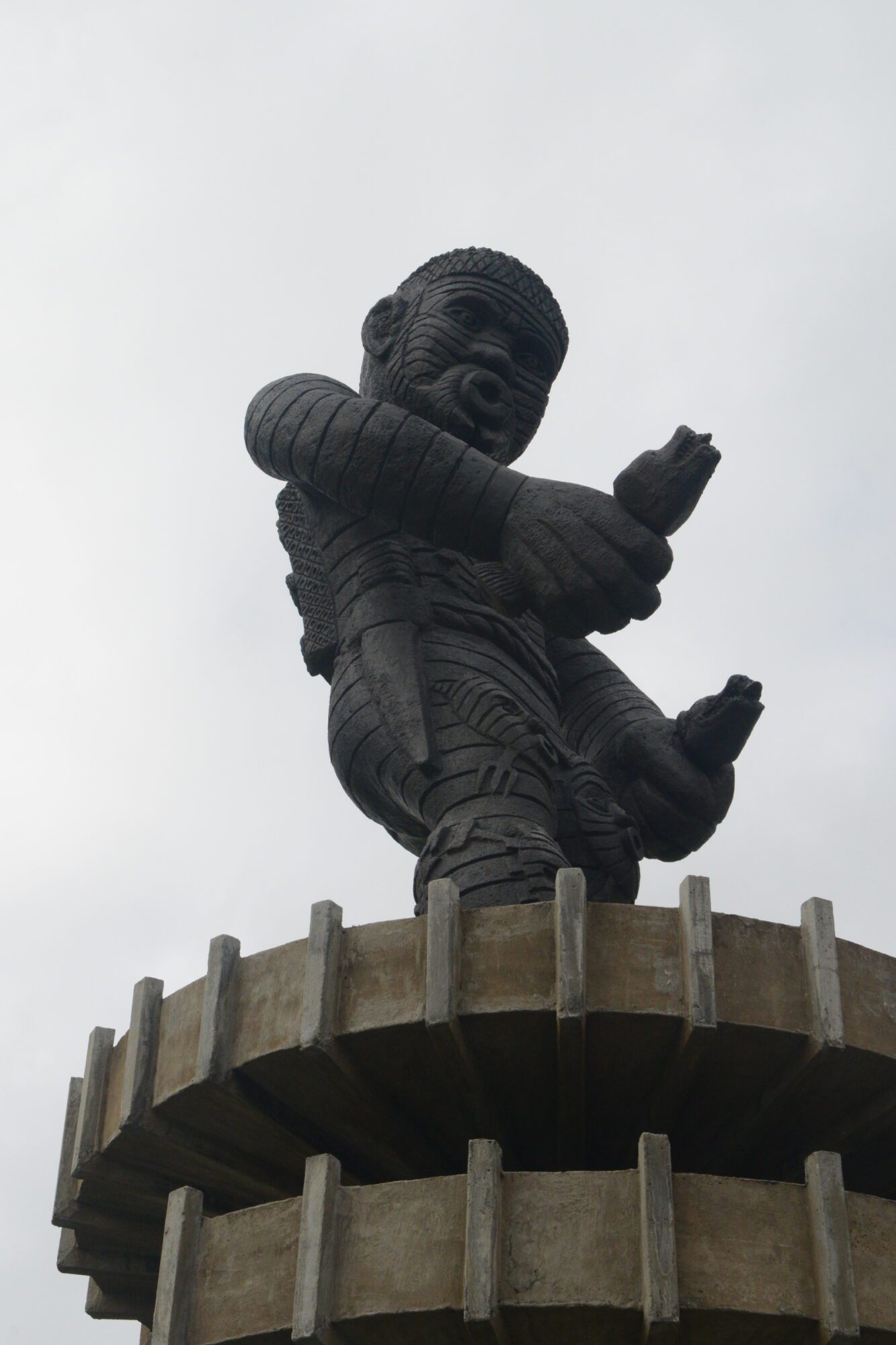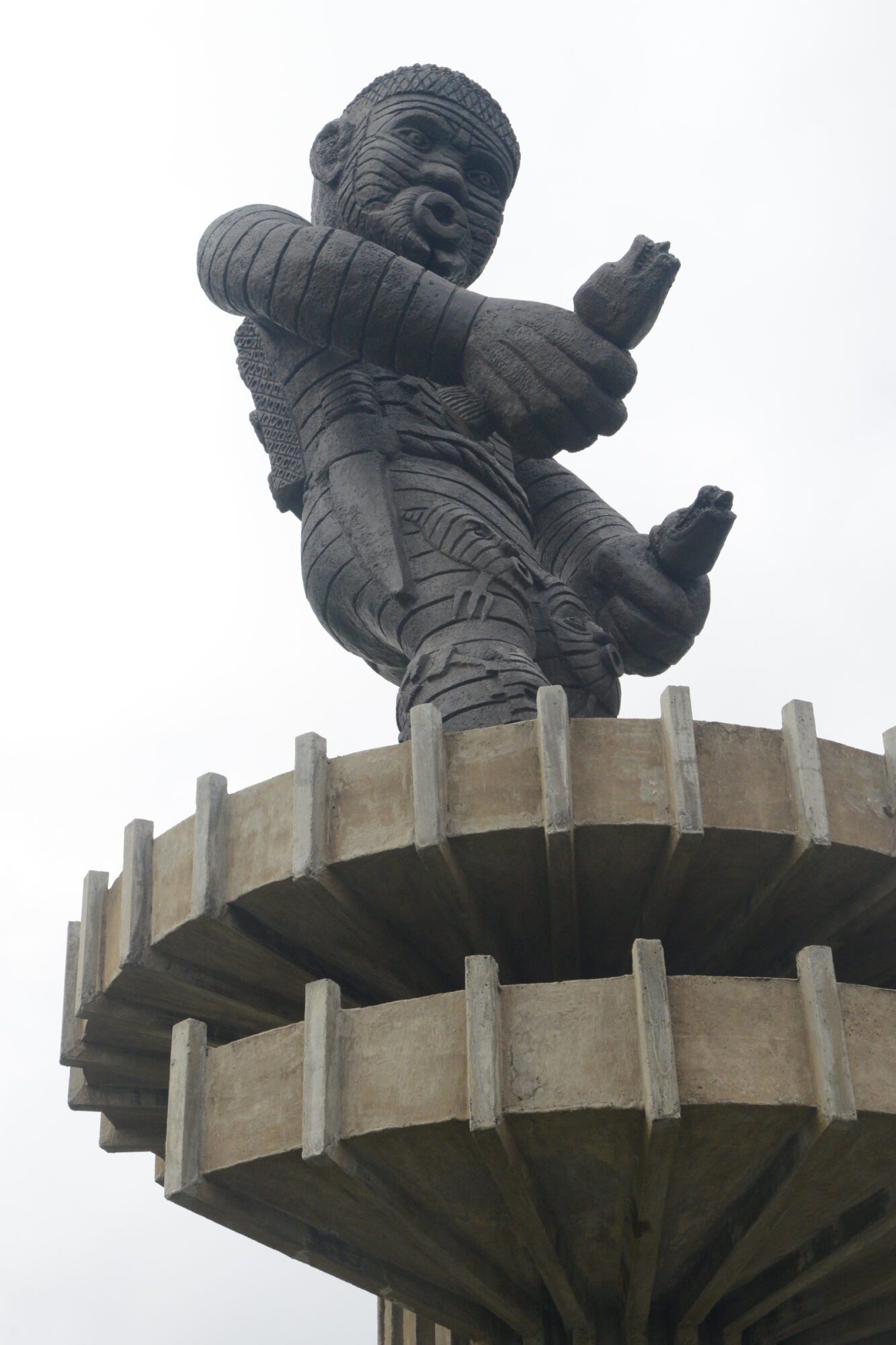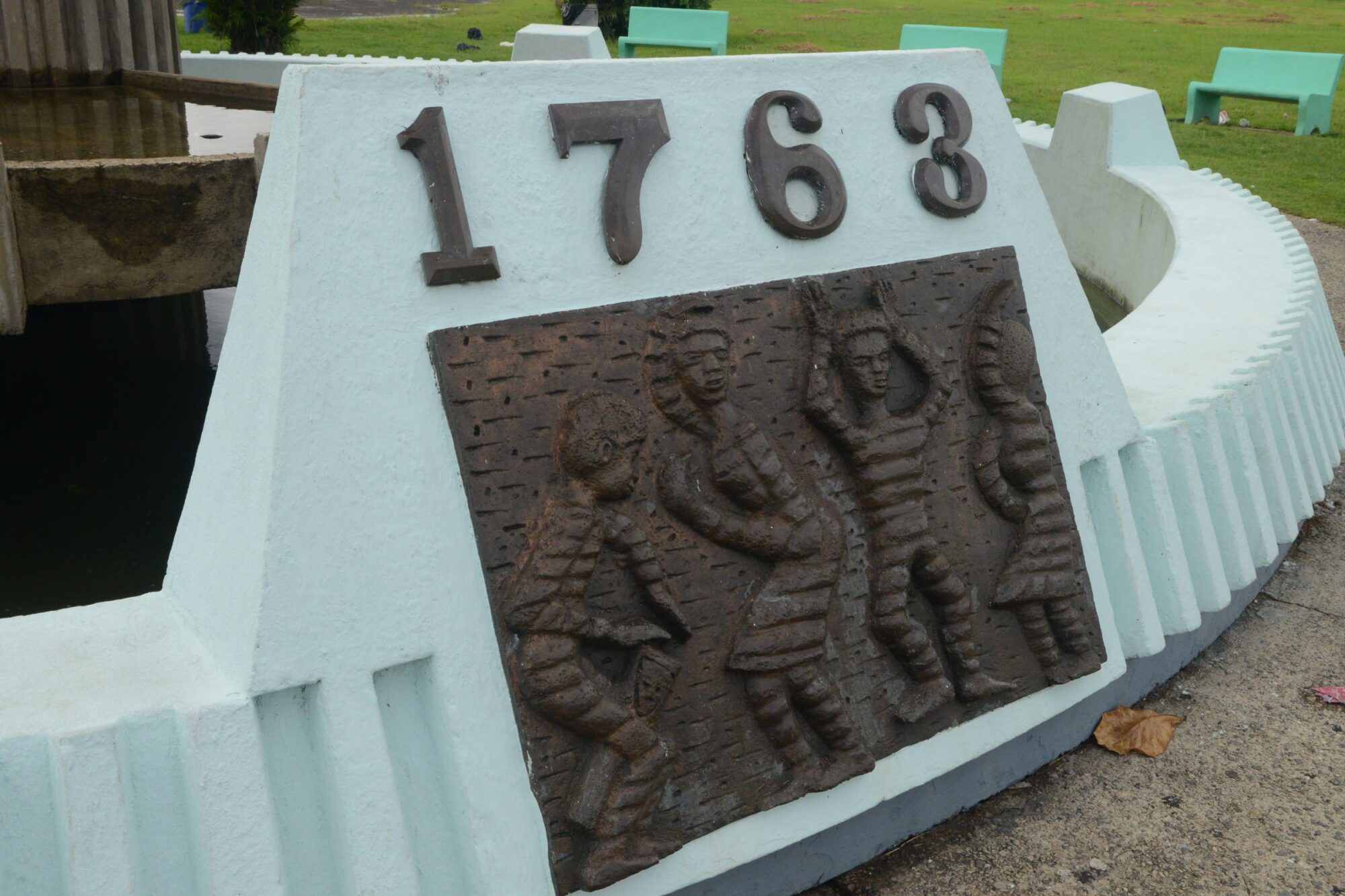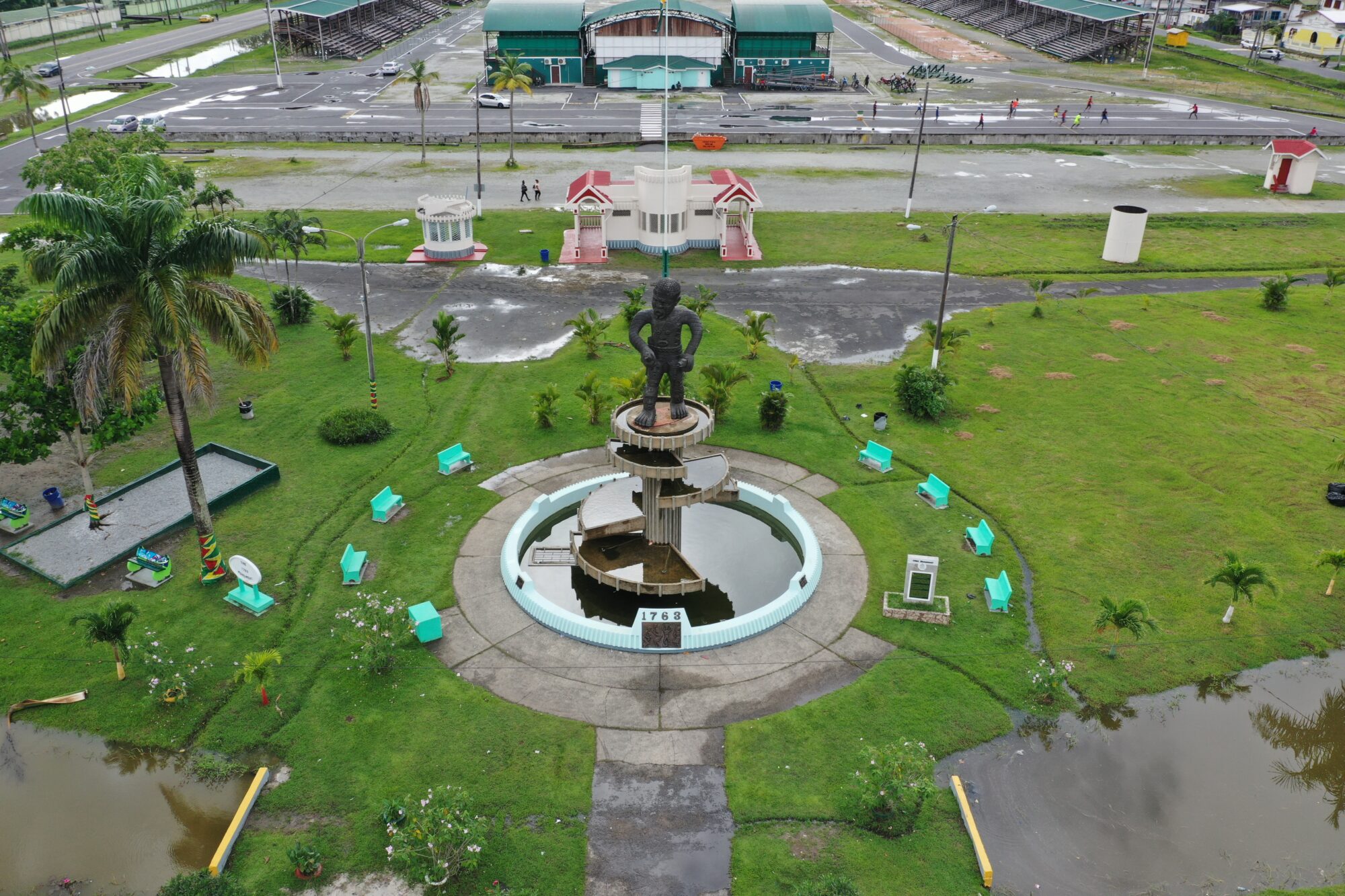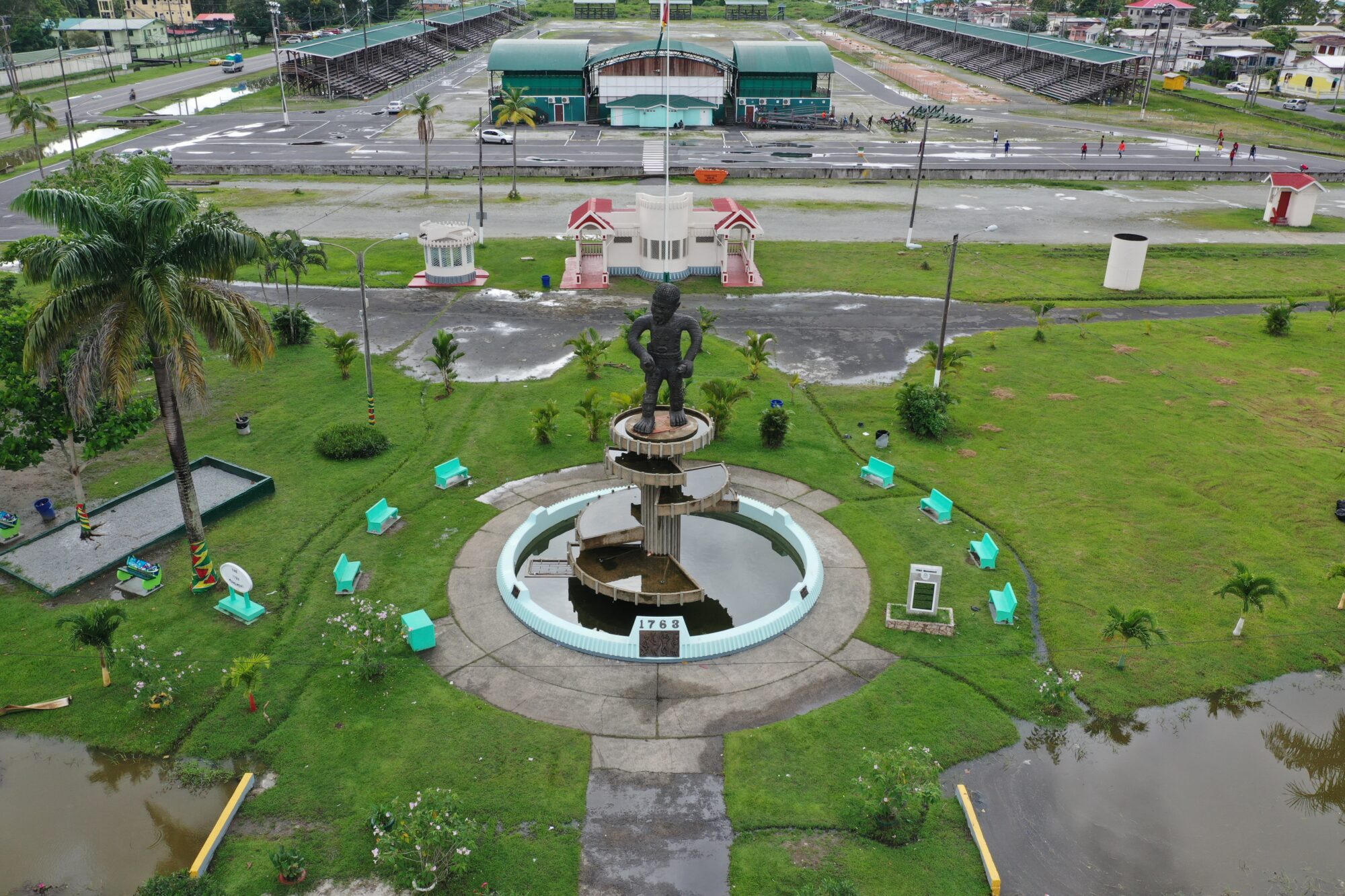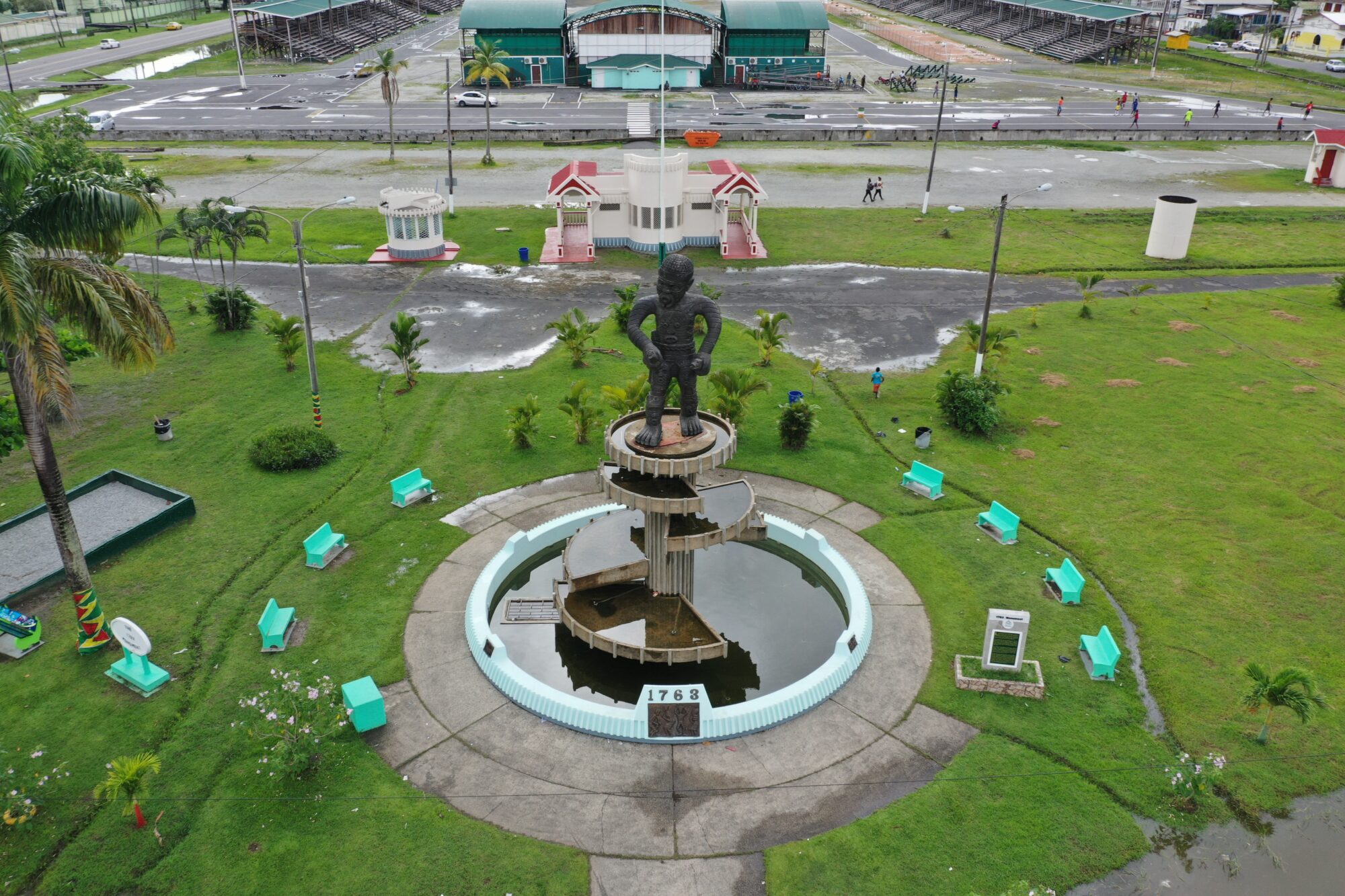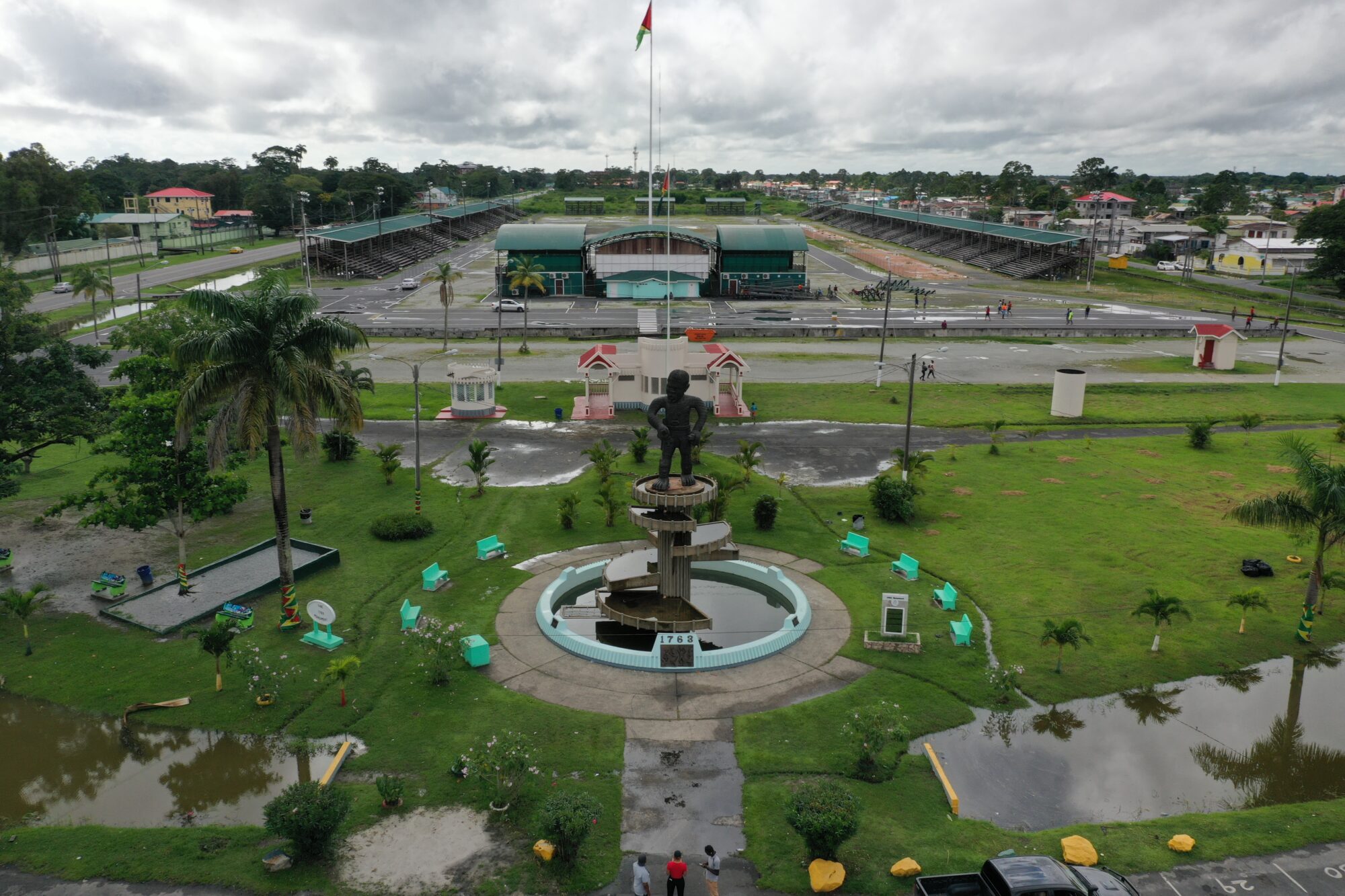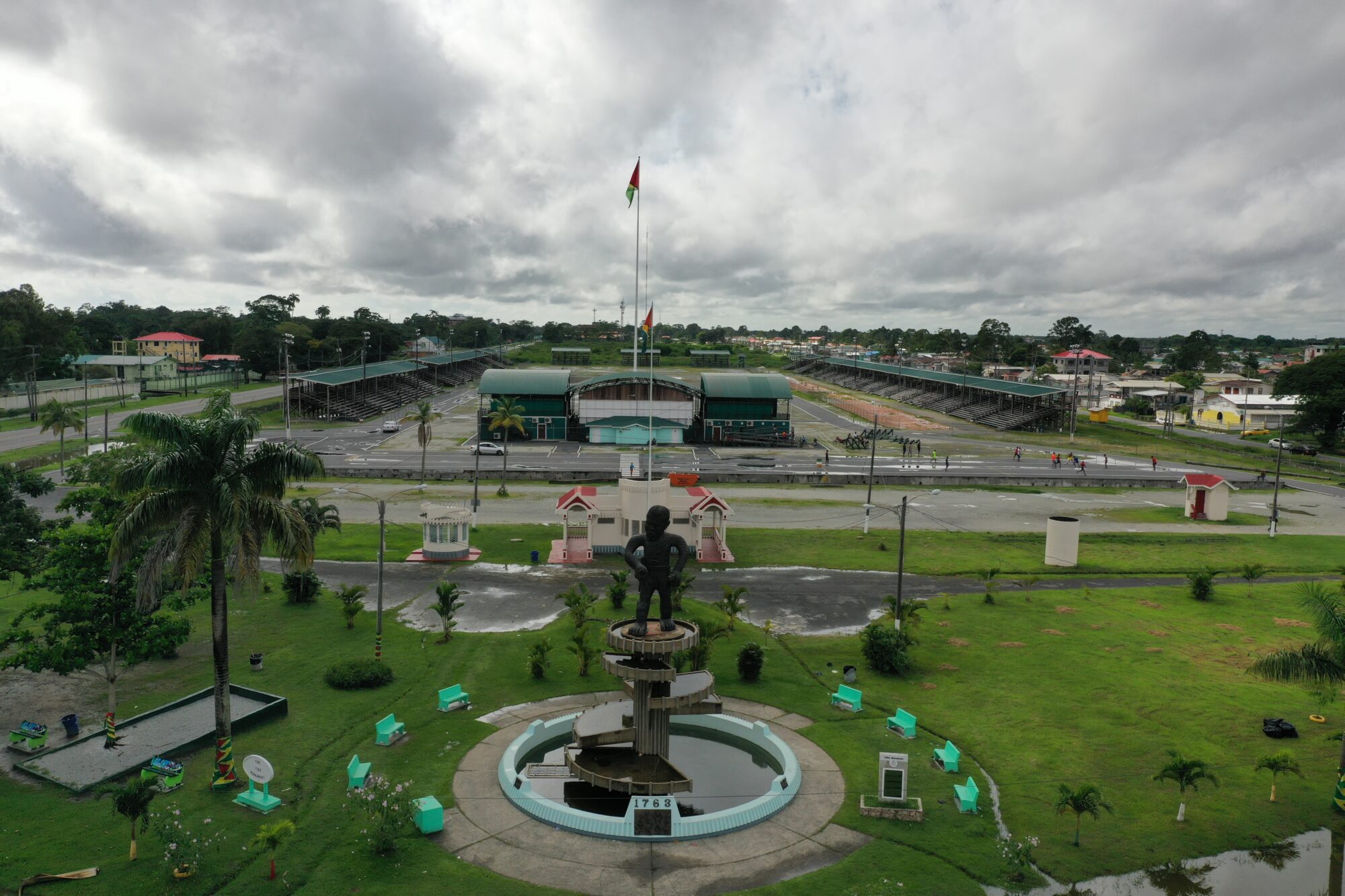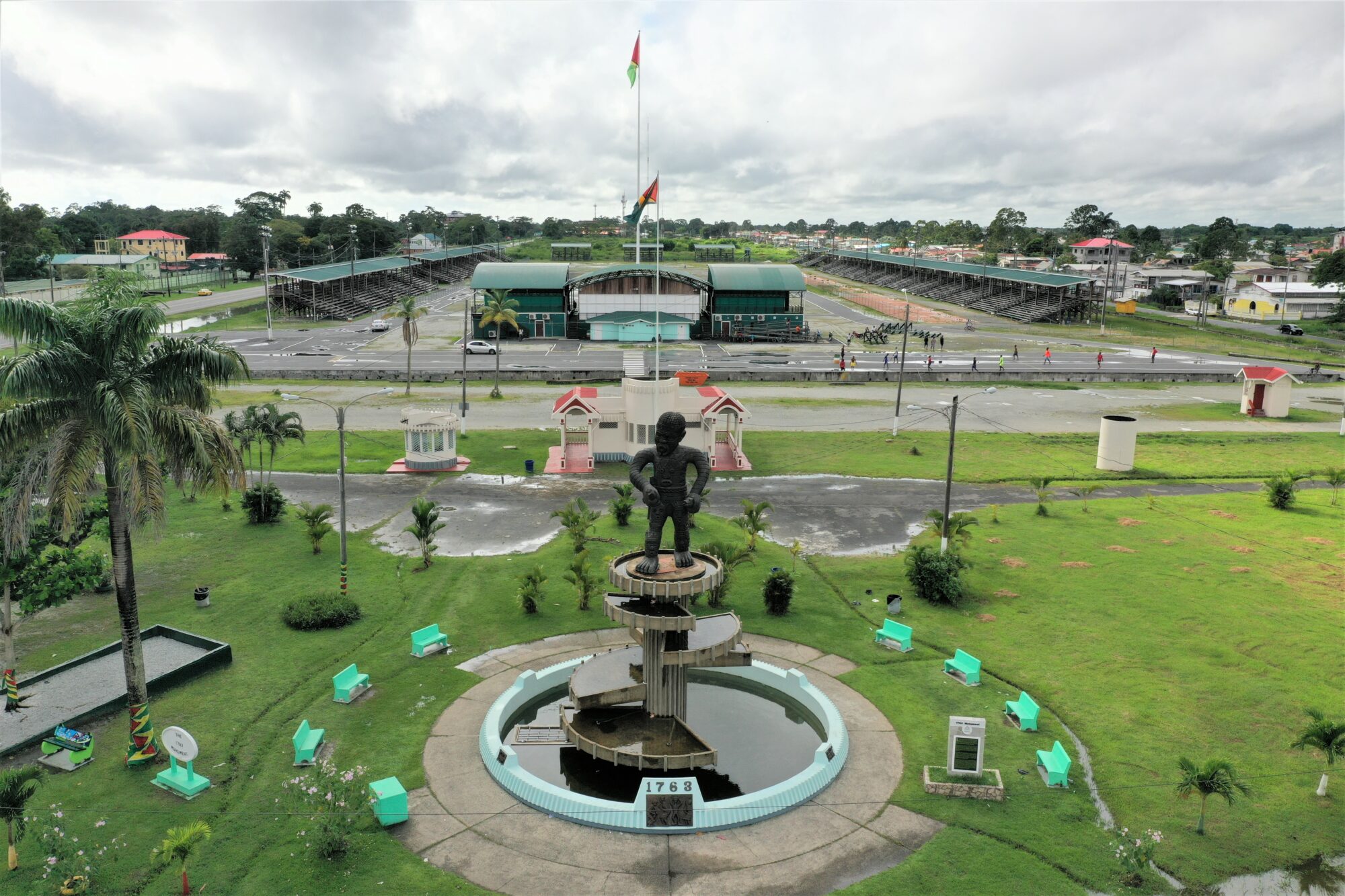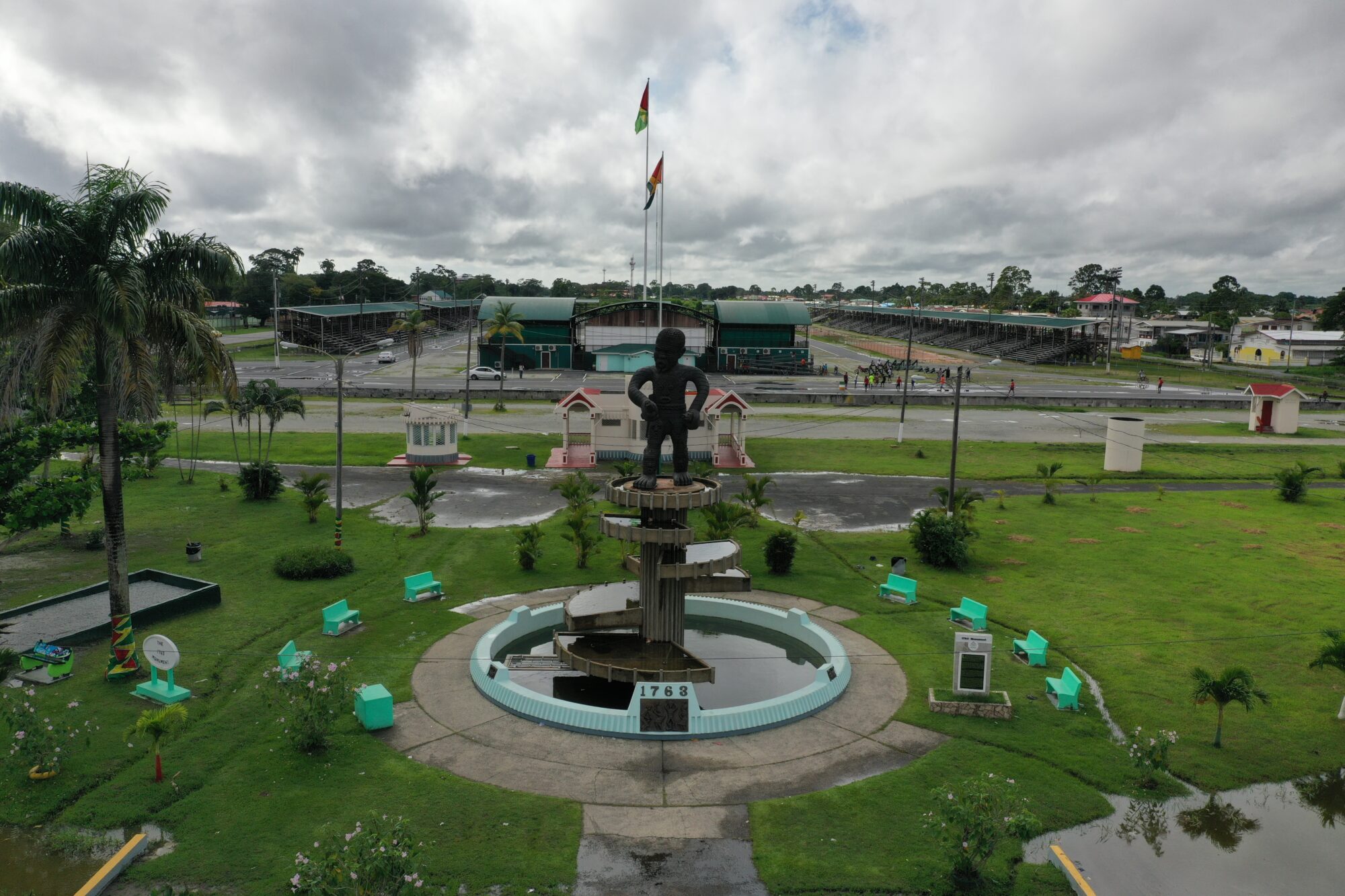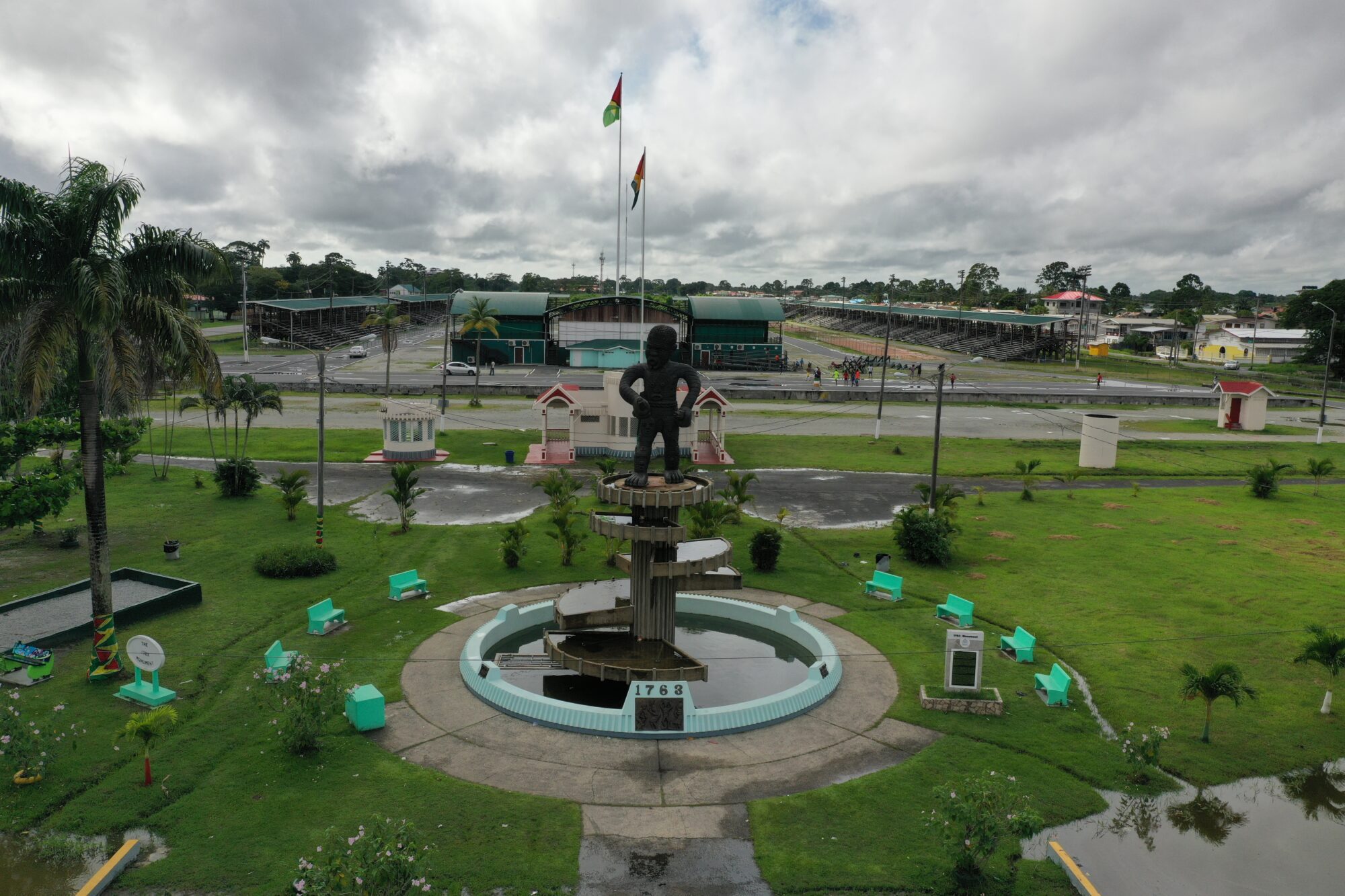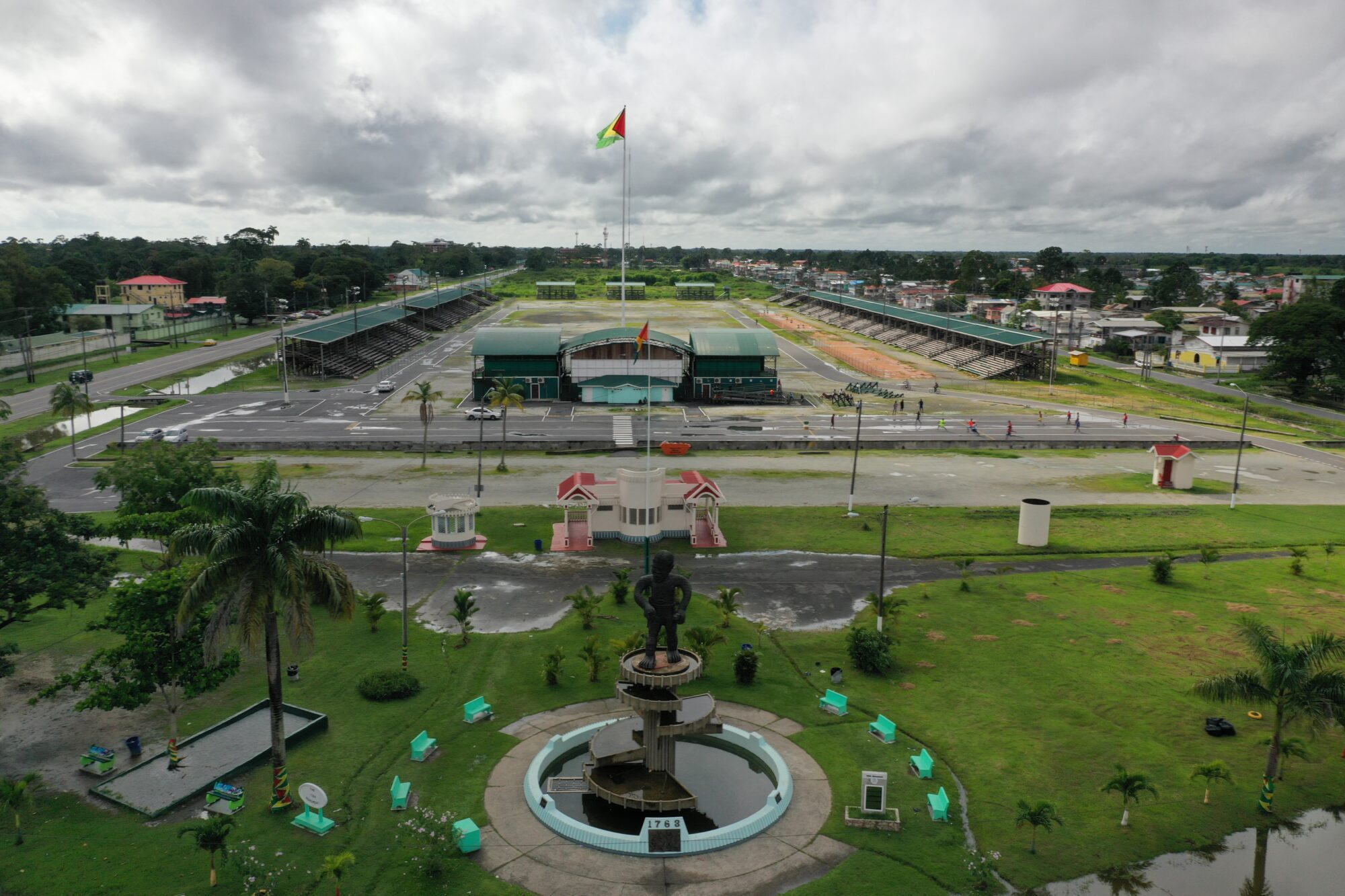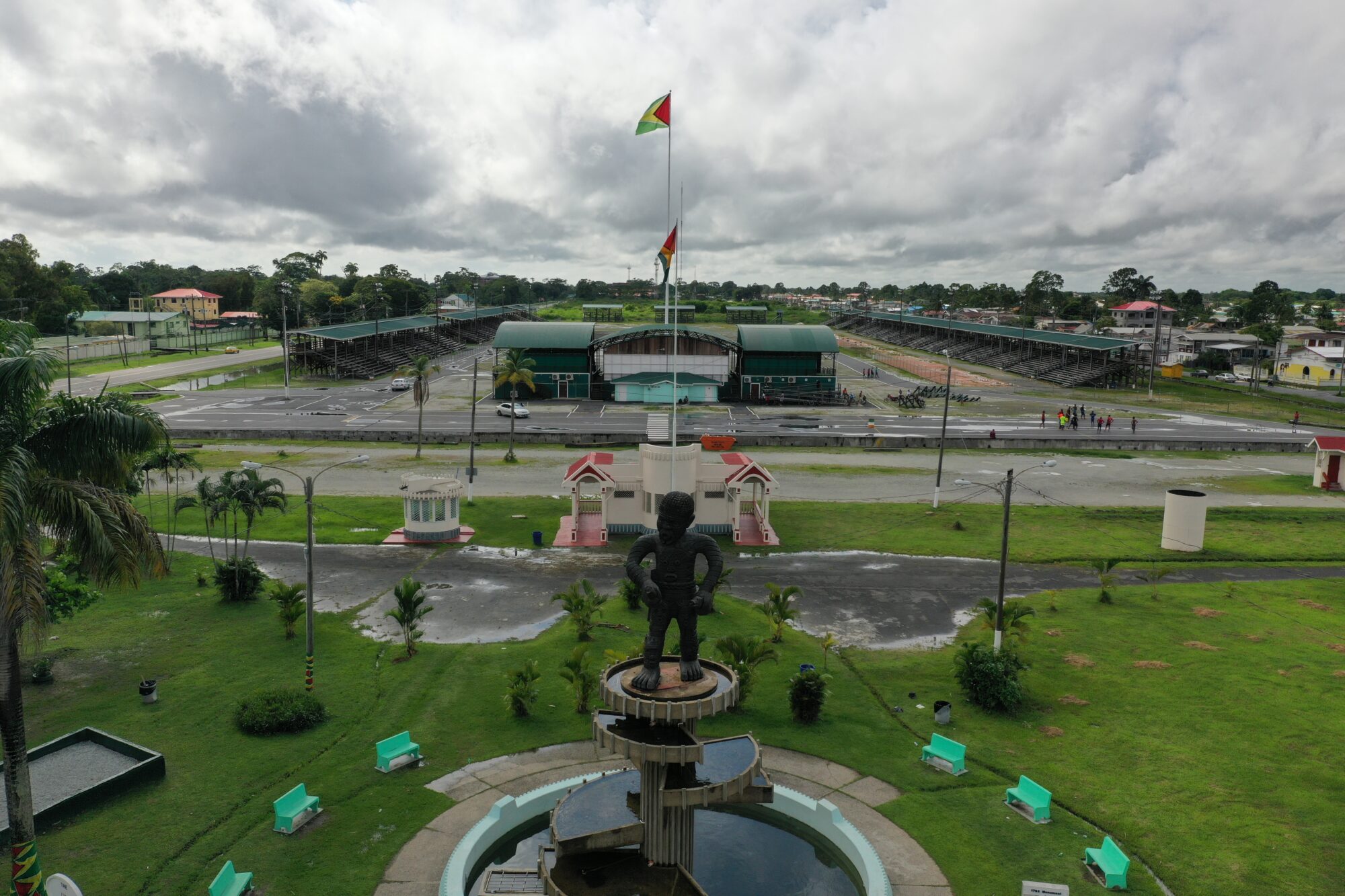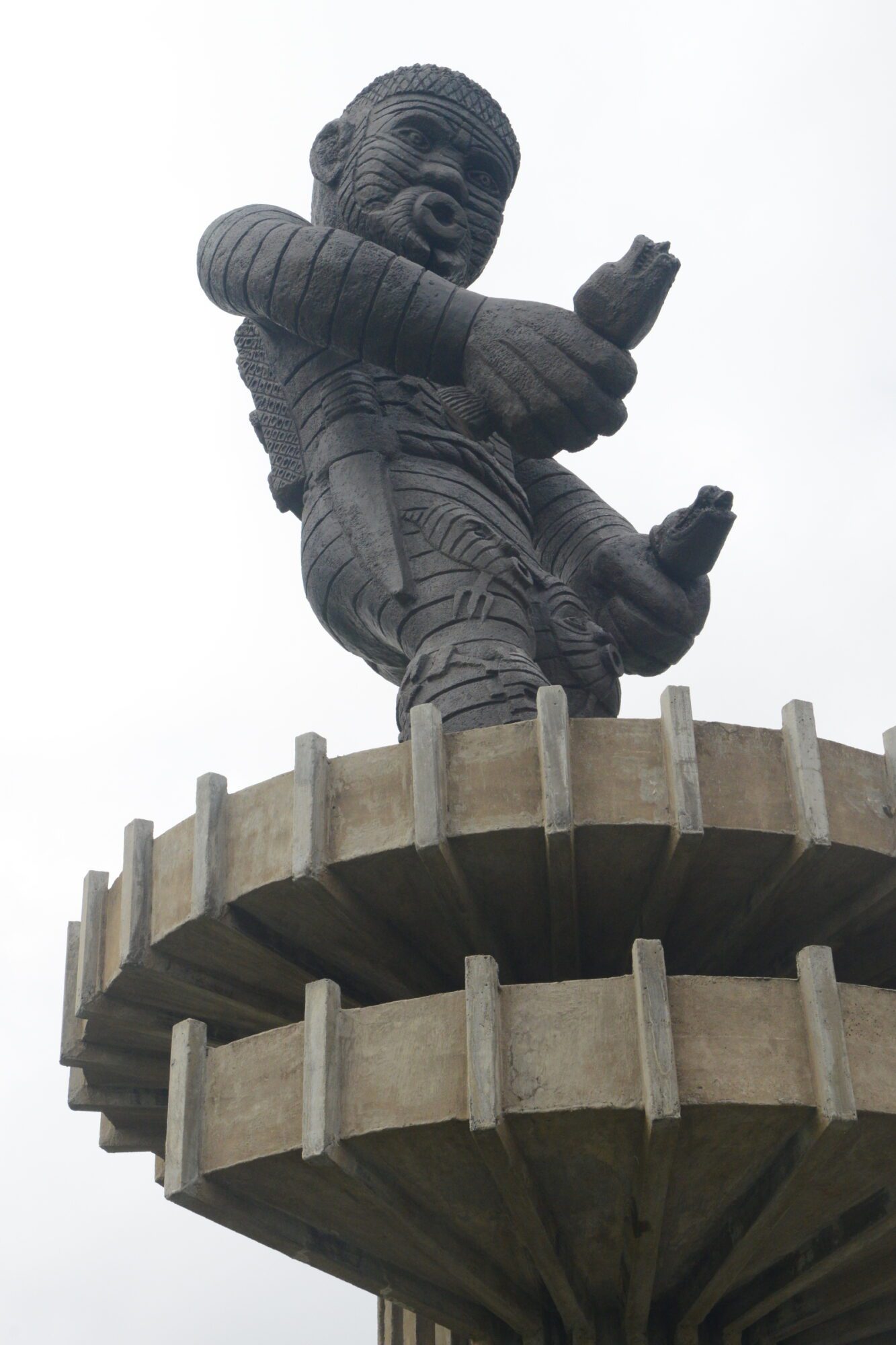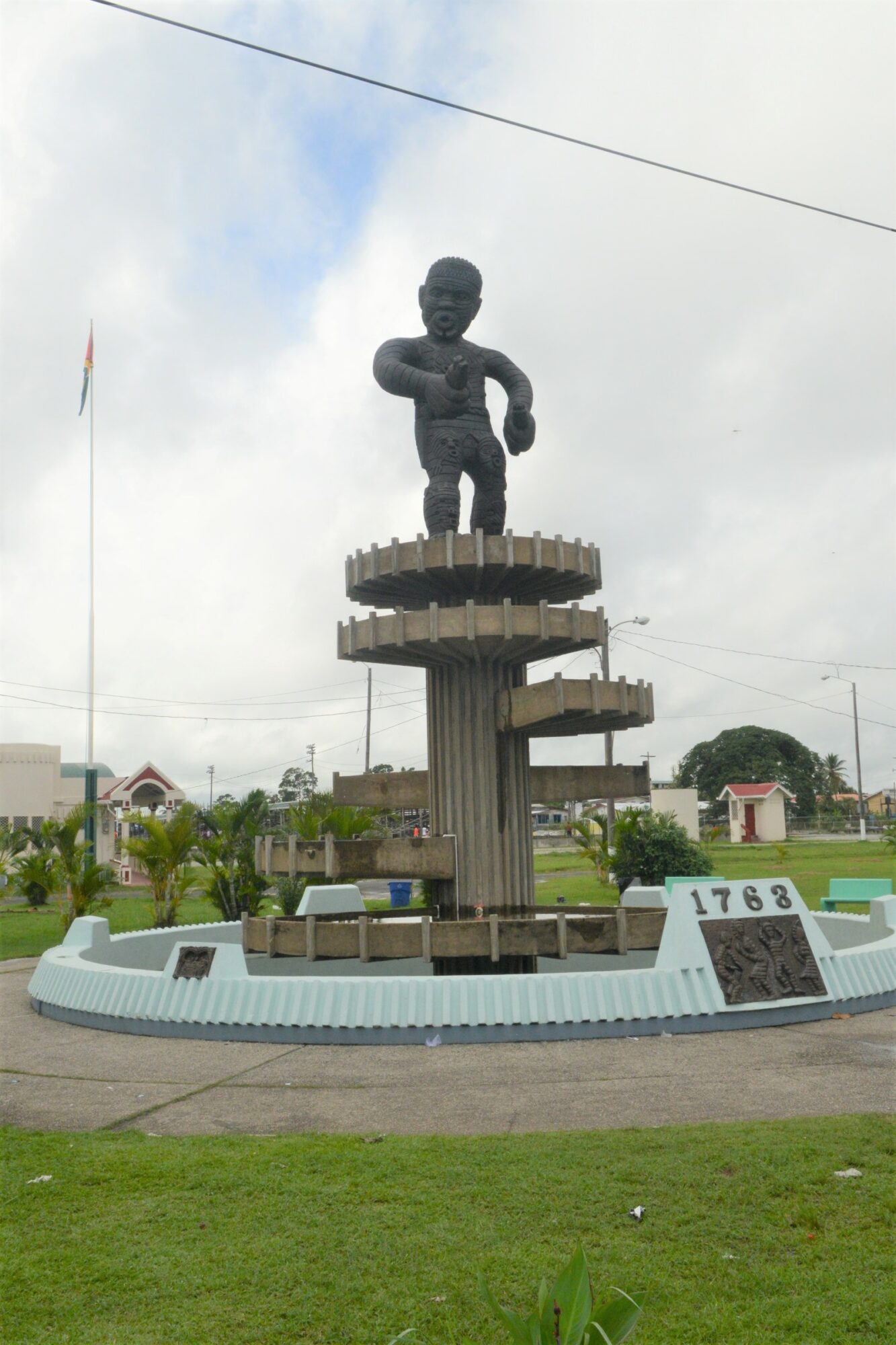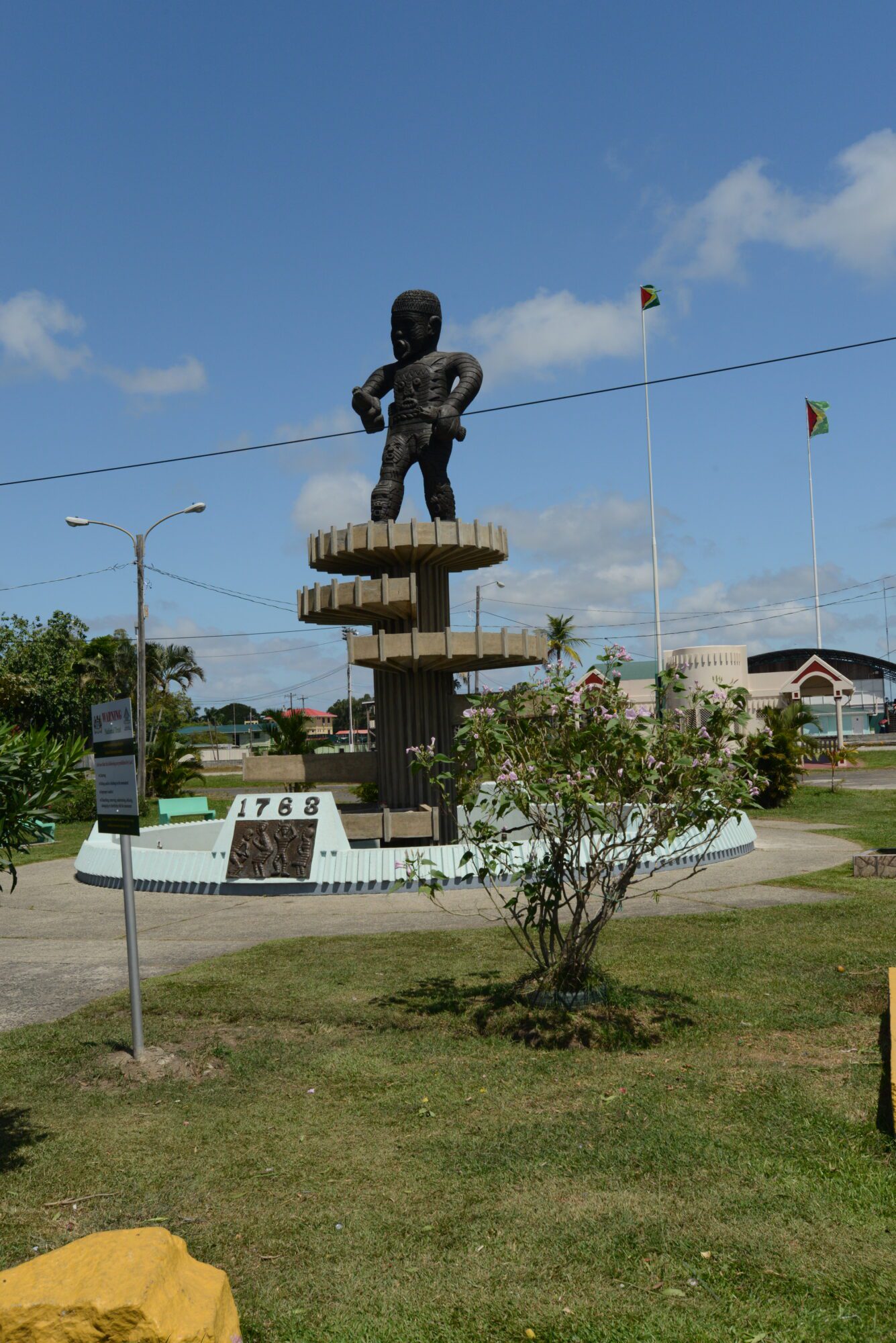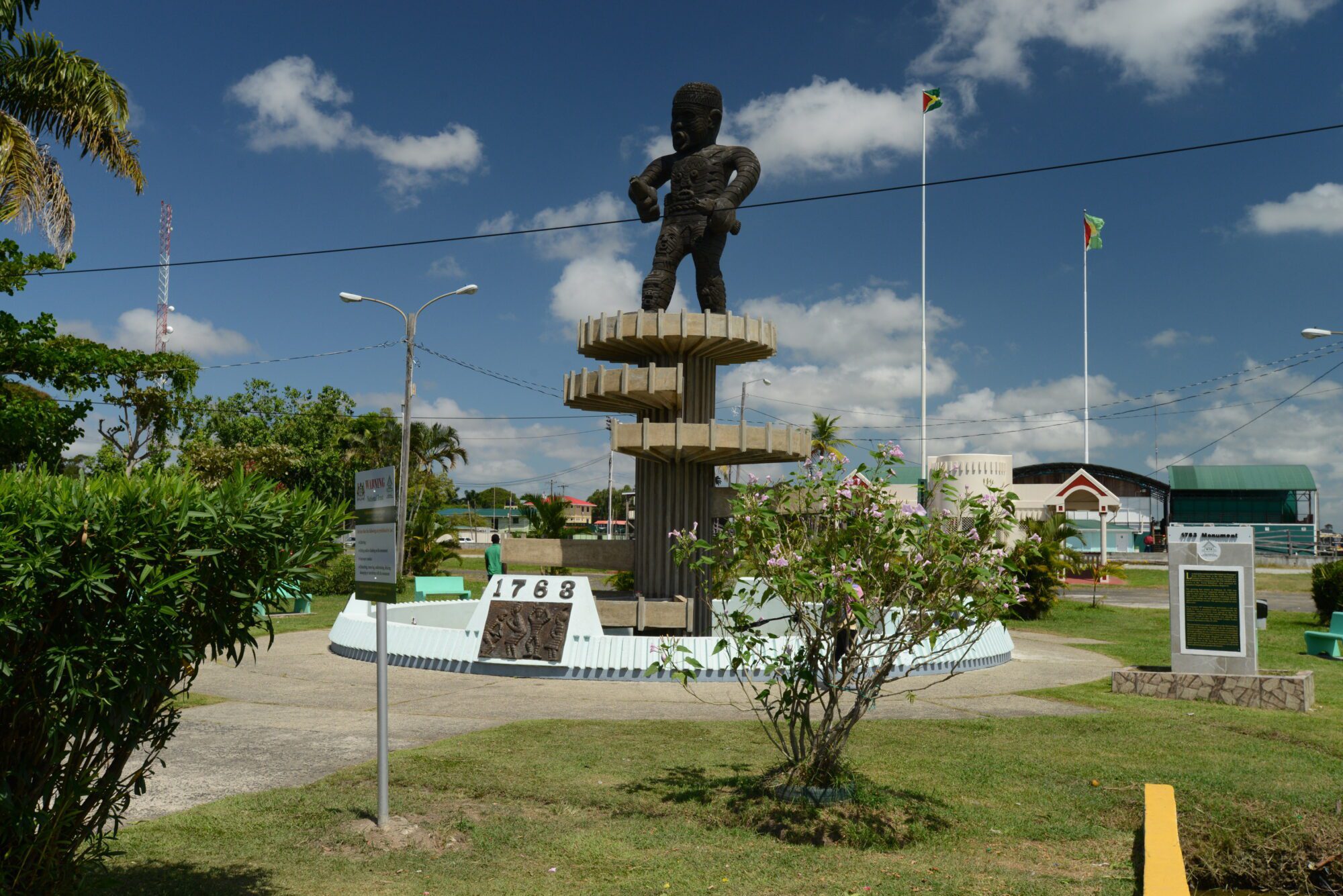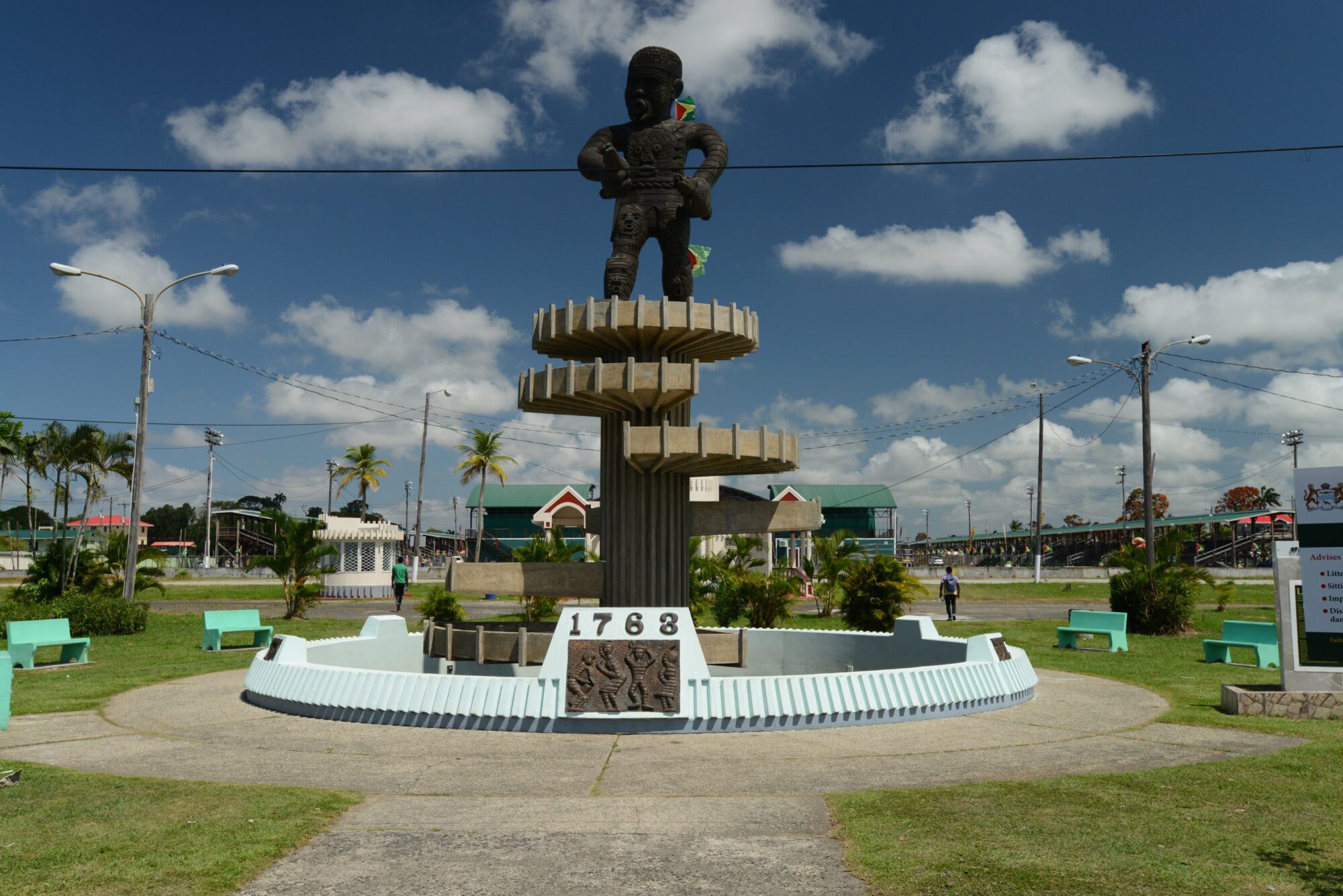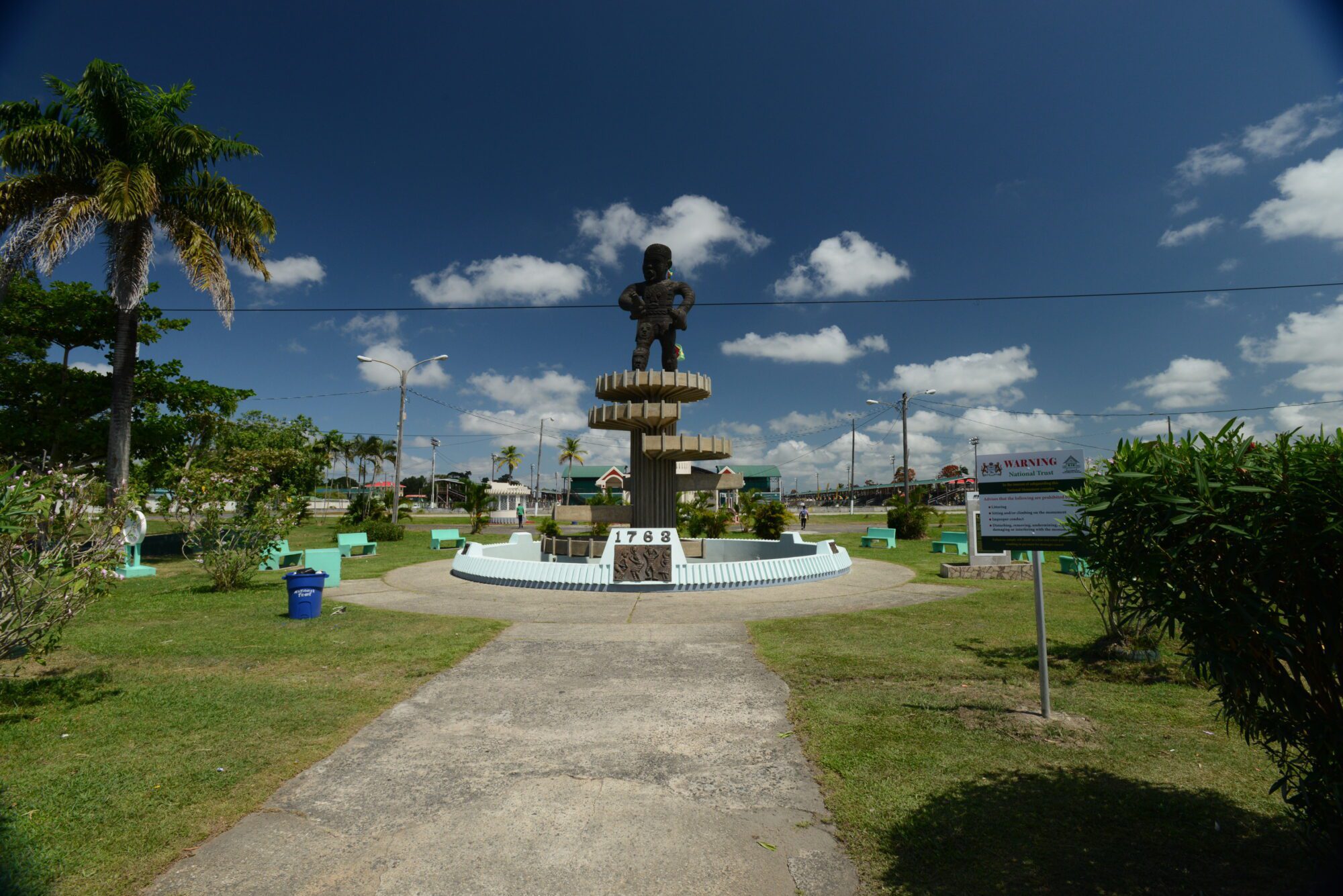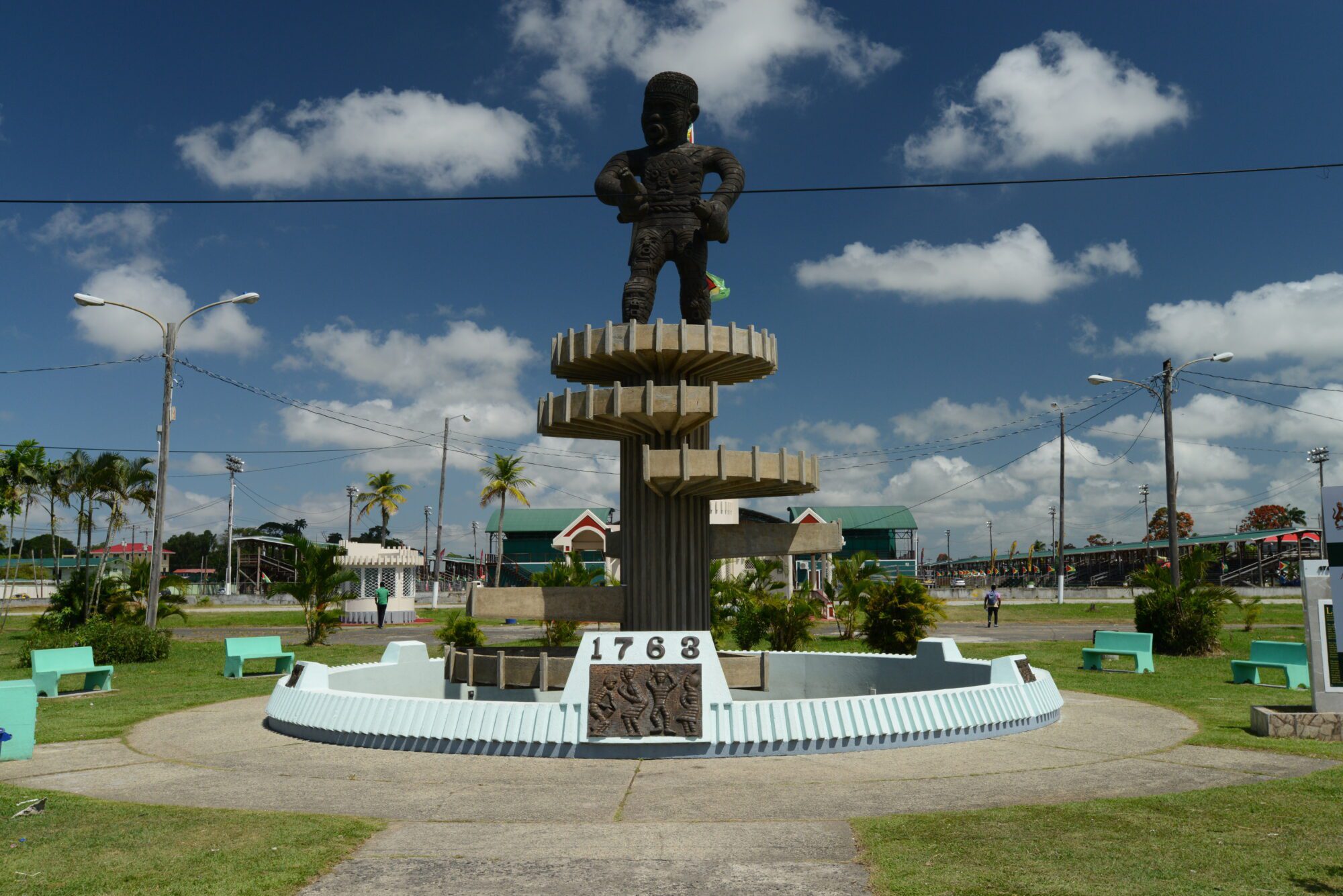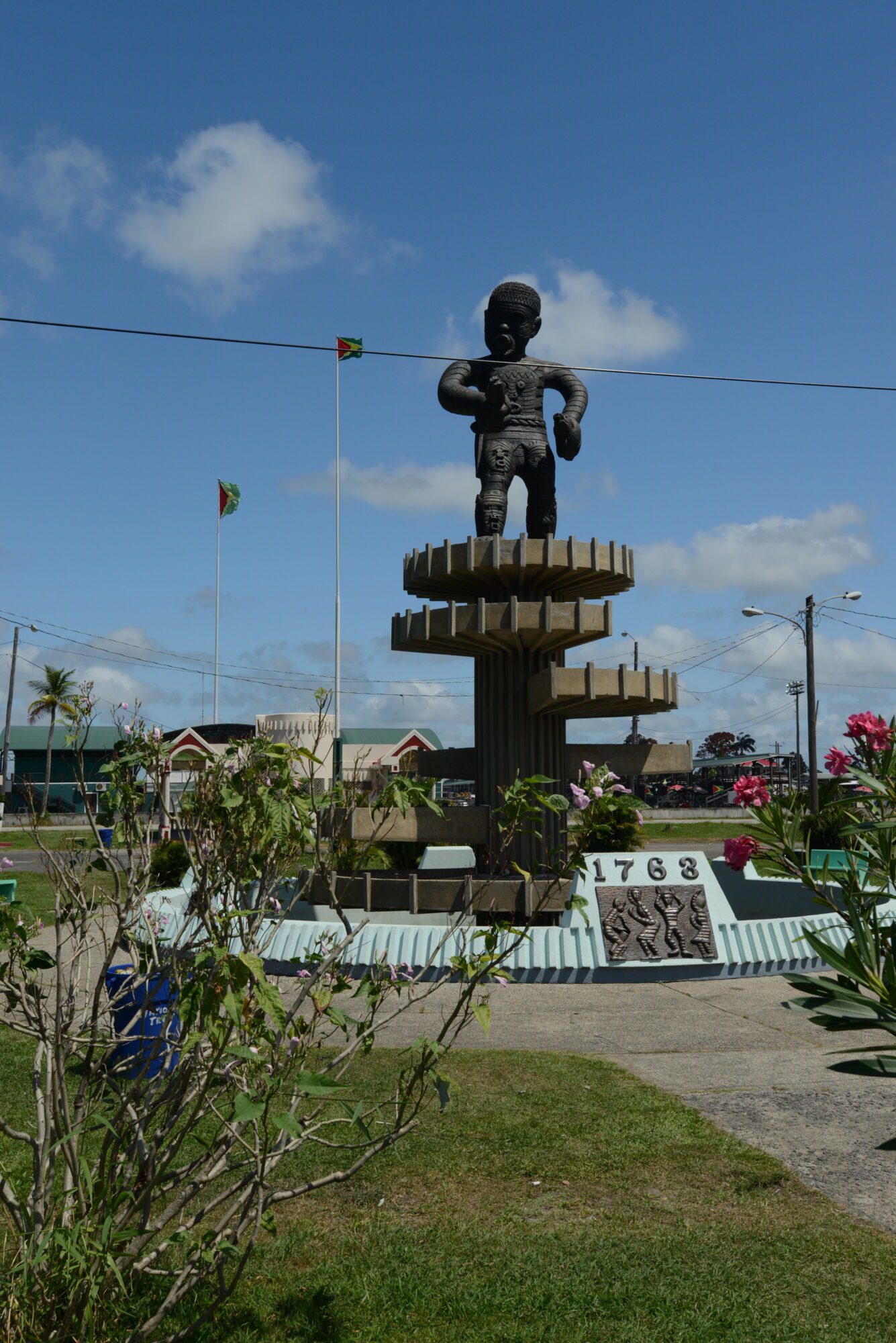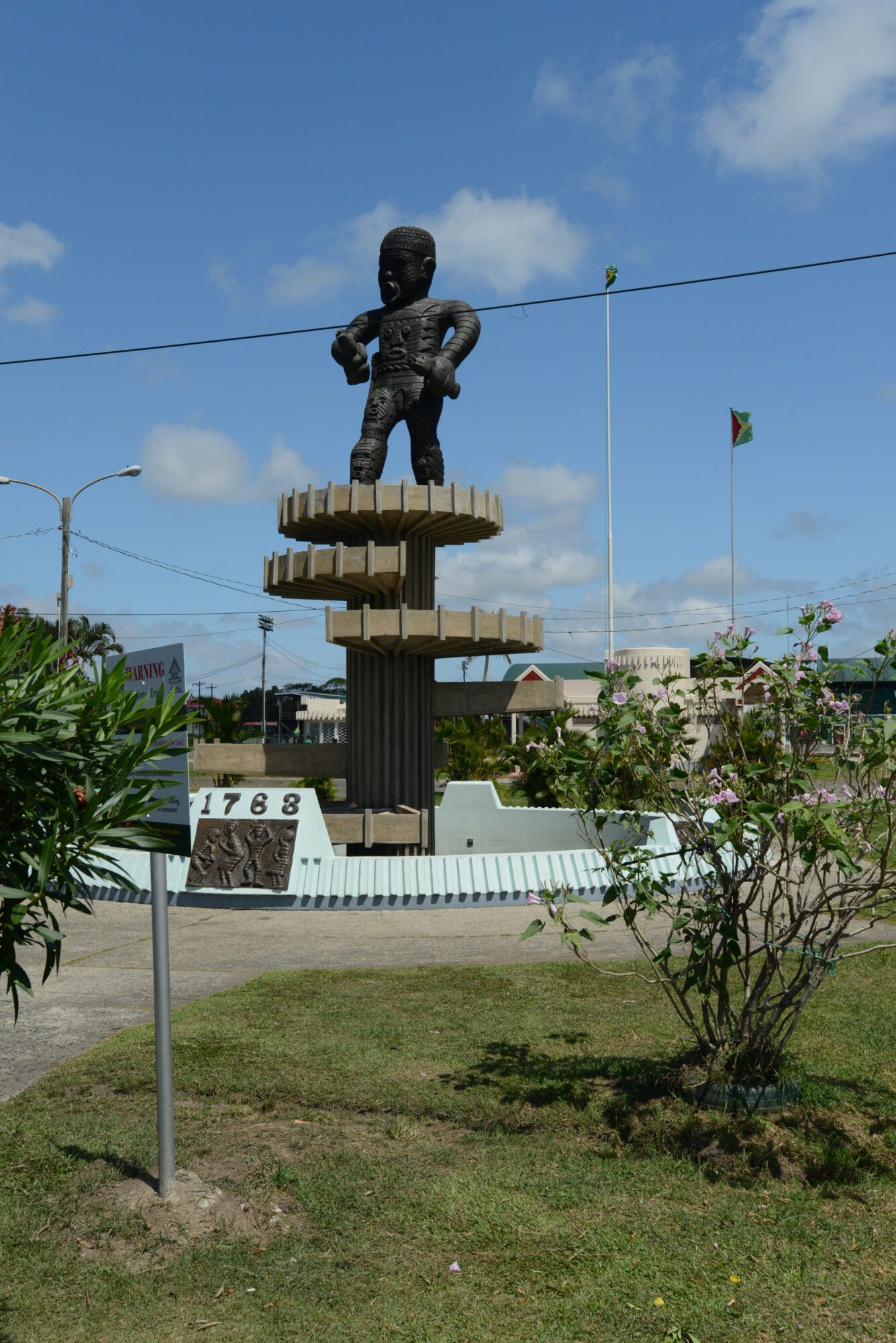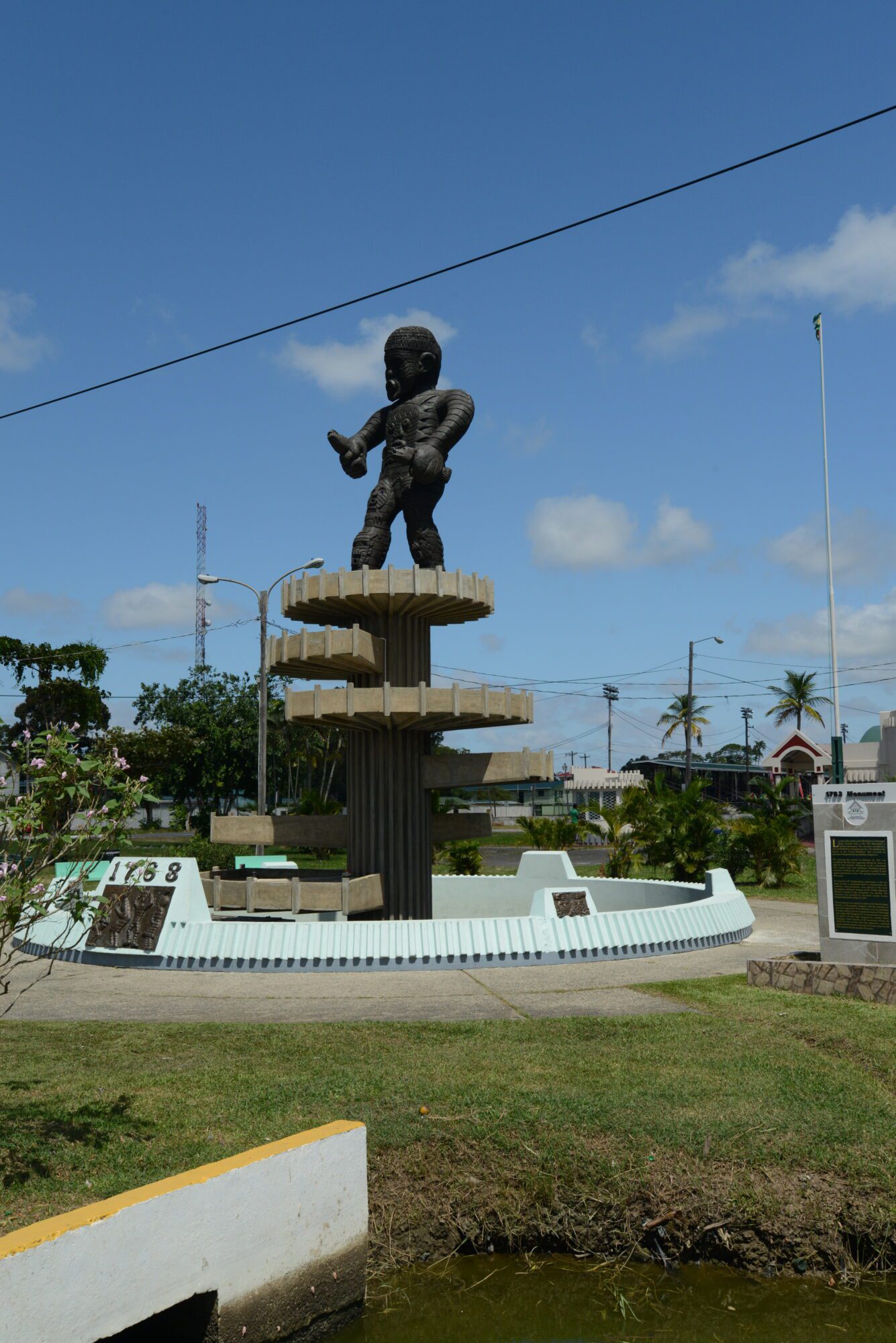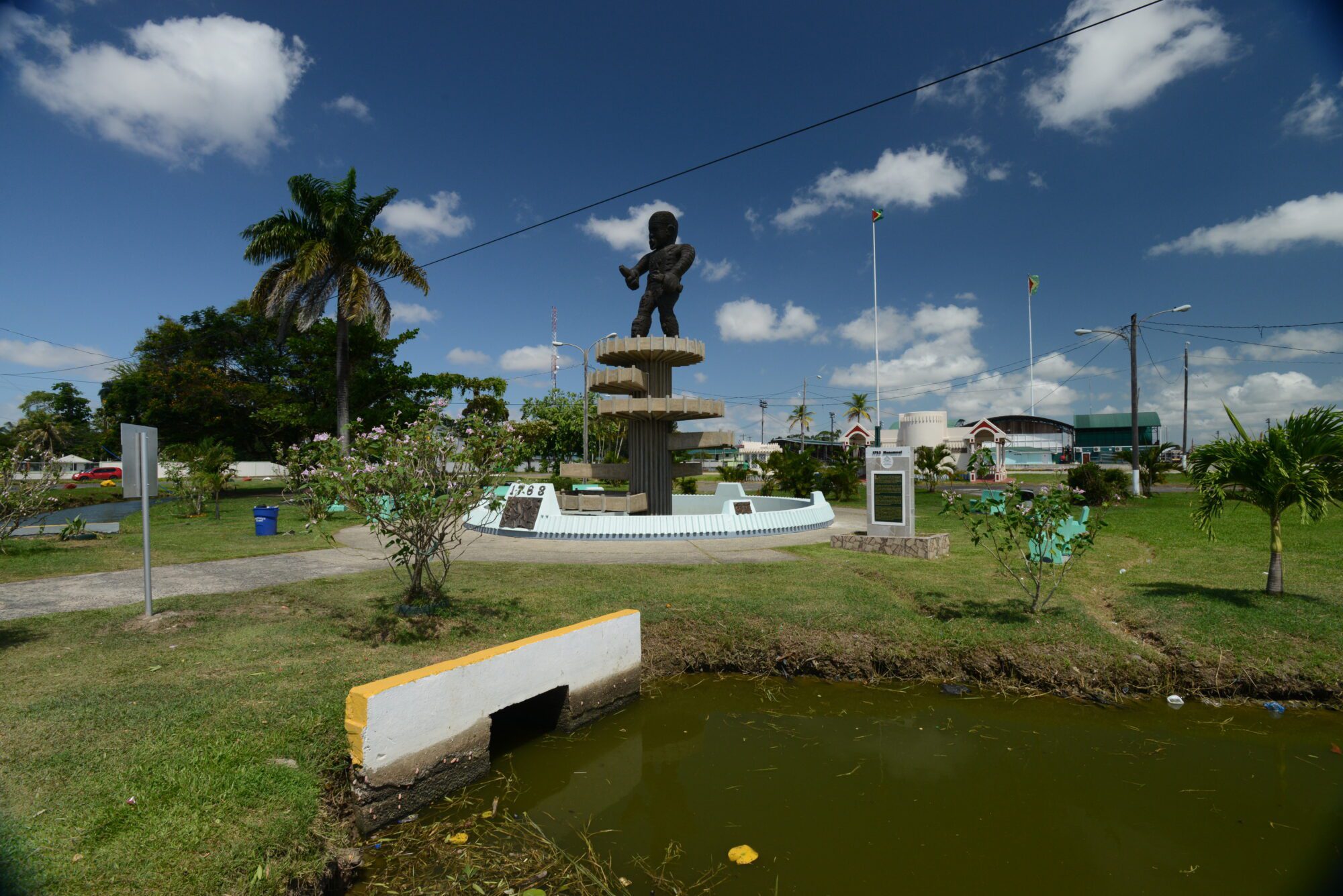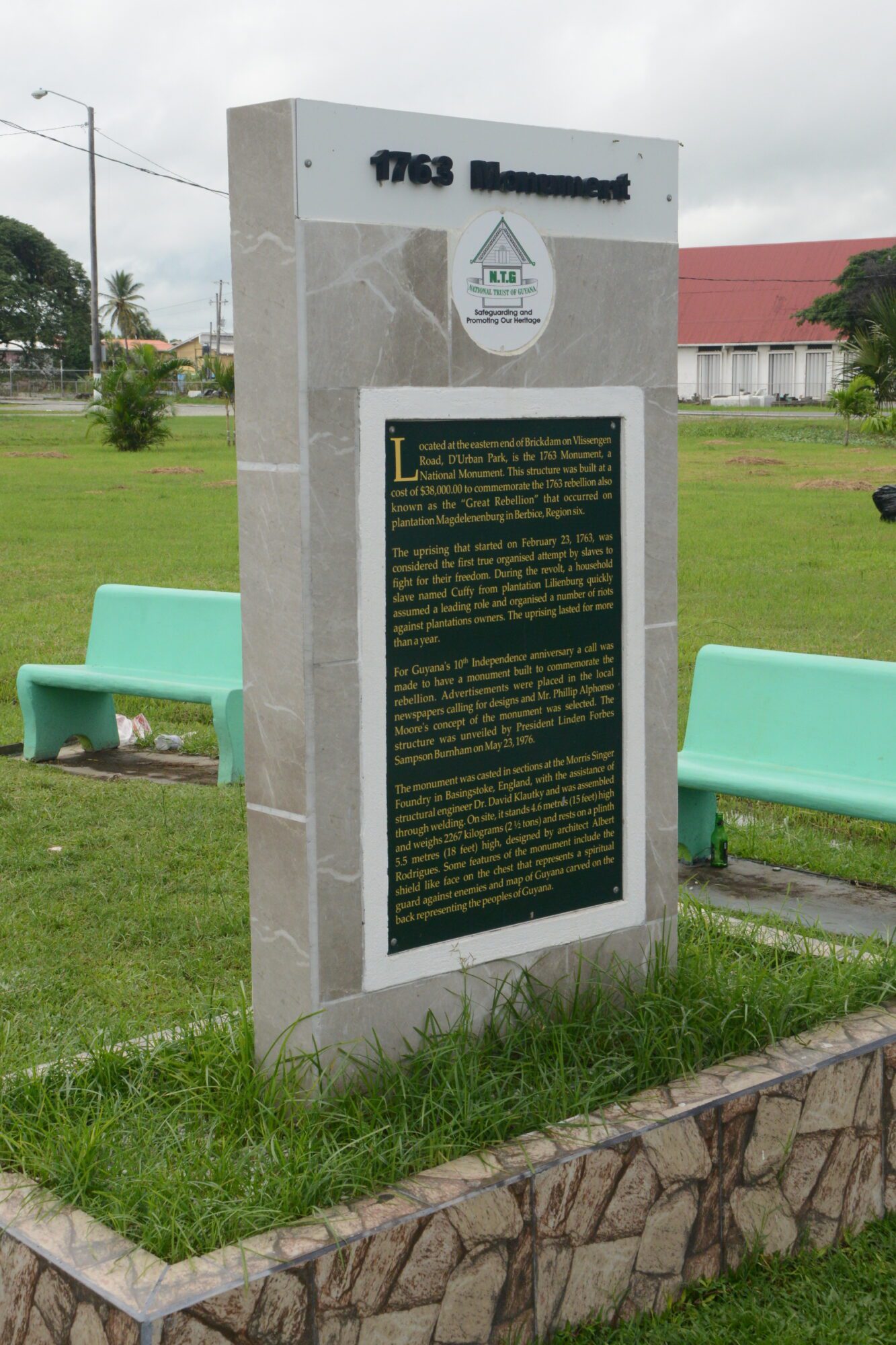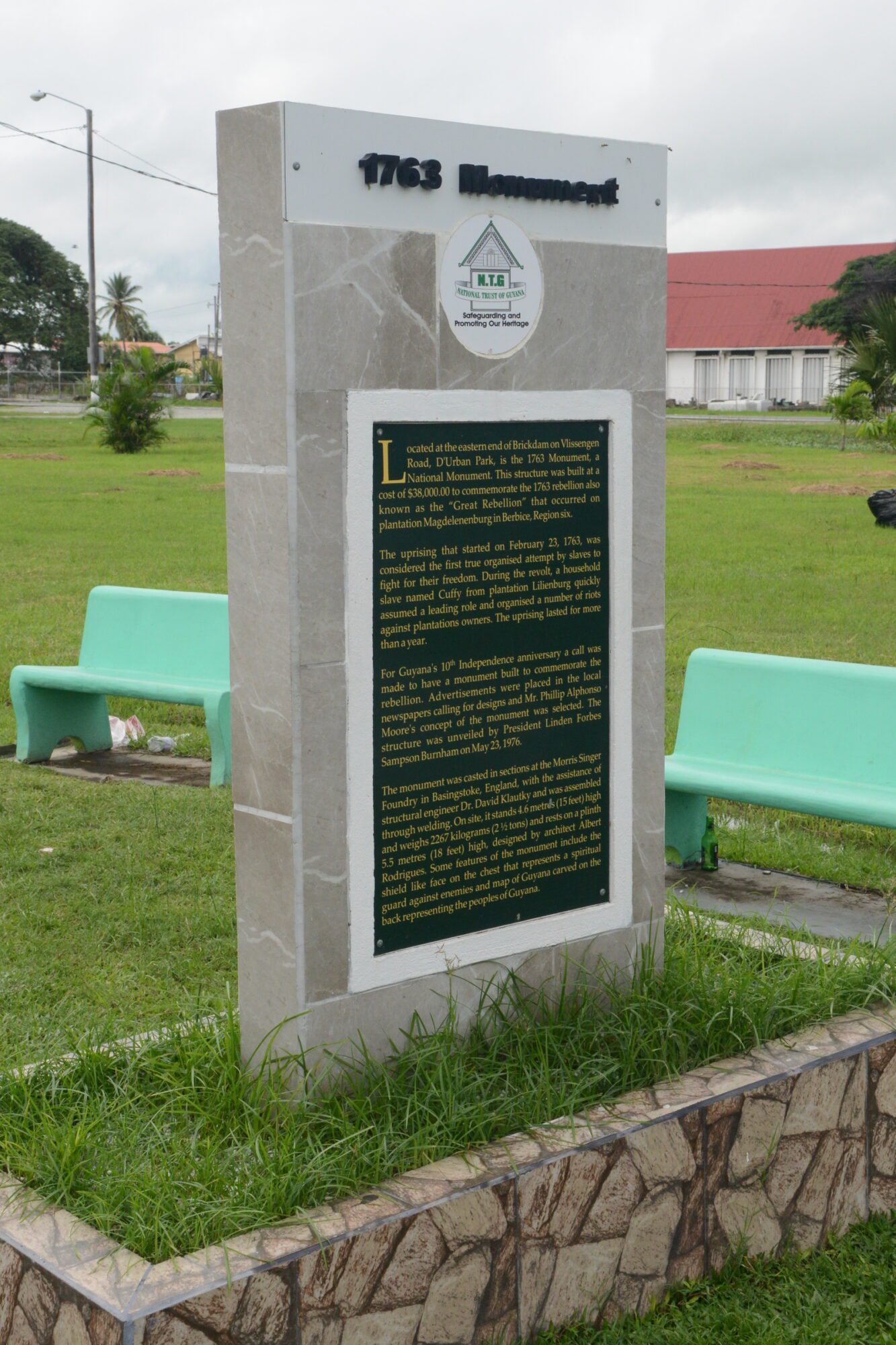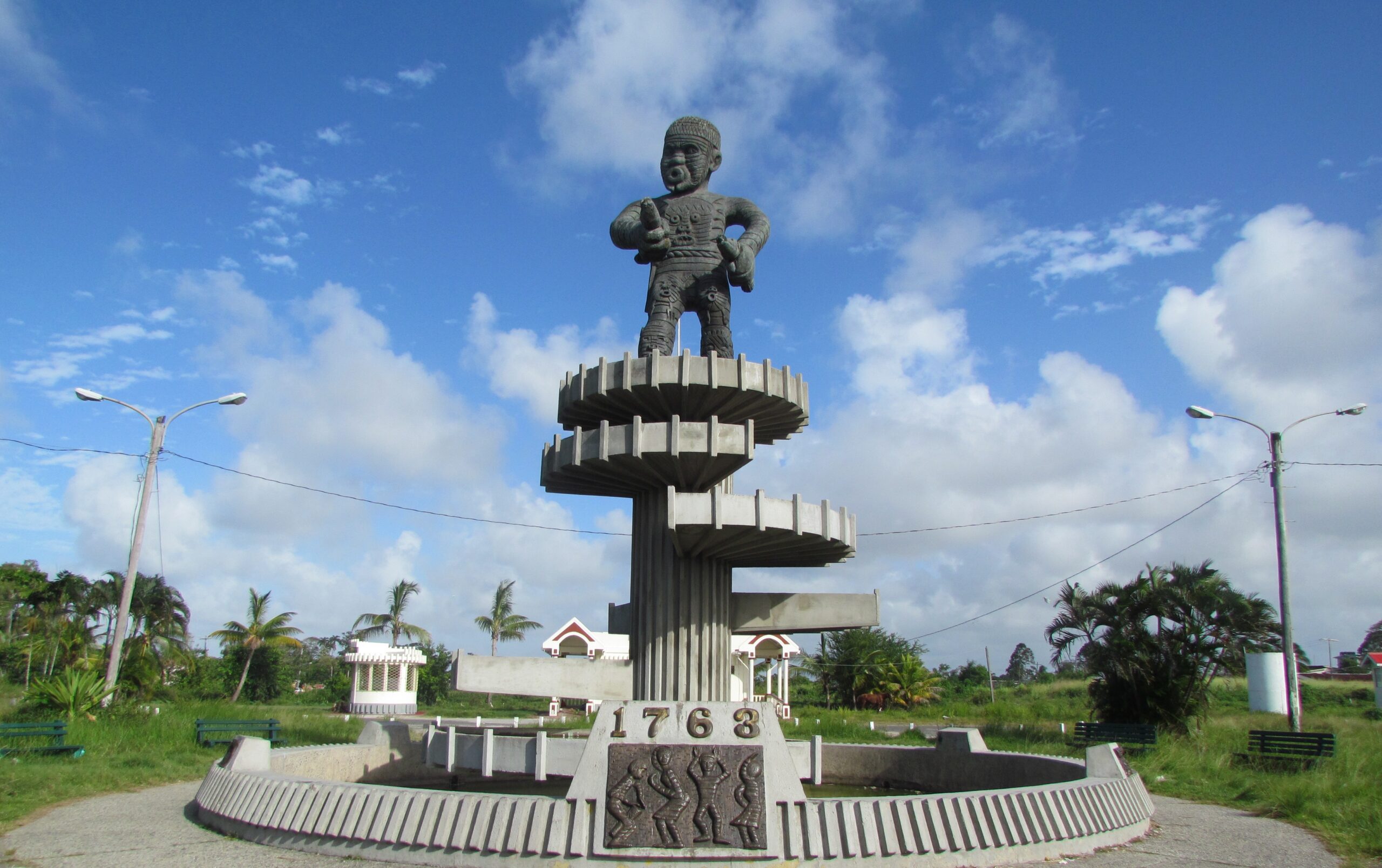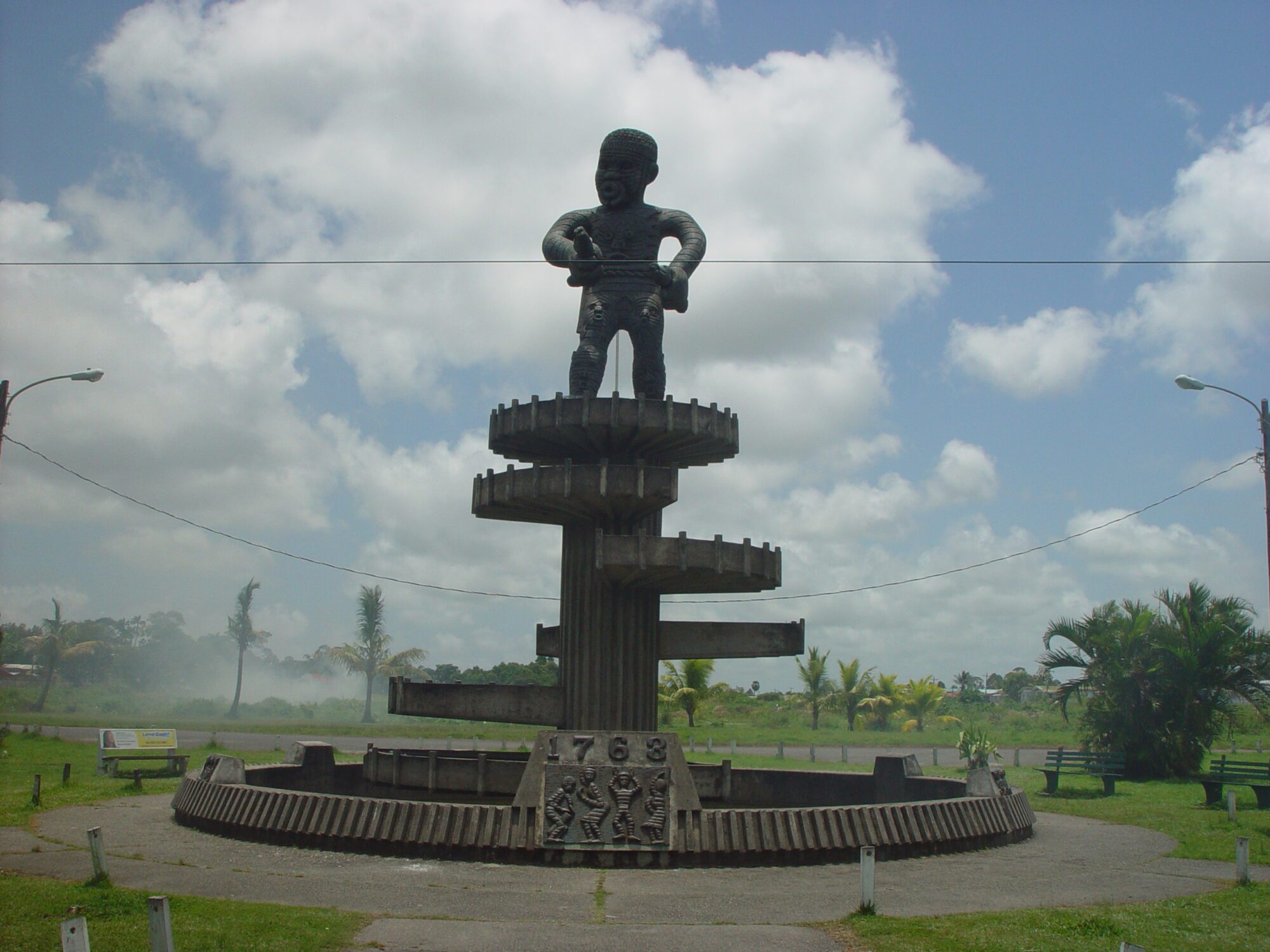Location: D’Urban Park, Georgetown
Classification: Commemorative Monument
Period/ Year Built: 1976
Historical Background / Description:
Located at the eastern end of Brickdam on Vlissengen Road, D’Urban Park, is the 1763 Monument, a National Monument. This structure was built at a cost of $38,000.00 to commemorate the 1763 rebellion also known as the “Great Rebellion” that occurred on plantation Magdelenenburg in Berbice, Region six. The plantation was located on the upper Canje River and was owned by Madam Vernesobre.
On February 23, 1763, the uprising that is considered the first true attempt by slaves to fight for their freedom in an organized fashion, started. During the revolt, a household slave named Cuffy from plantation Lilienburg quickly assumed a leading role in the rebellion and organized a number of riots against plantations owners. The uprising lasted for more than a year before the Dutch were able to overcome the slaves.
For Guyana’s 10th Independence anniversary, a call was made to have a monument erected to commemorate the rebellion. Advertisements were placed in the local newspapers calling for designs and Mr. Phillip Alphonso Moore’s concept of the monument was selected. The structure was unveiled by President Linden Forbes Sampson Burnham on May 23, 1976.
The monument was casted in sections at the Morris Singer Foundry in Basingstoke, England, with the assistance of structural engineer Dr. David Klautky and was assembled through welding. On site, it stands 4.6 metres (15 feet) high and weighs 2267 kilograms (2 ½ tons) and rests on a plinth 5.5 metres (18 feet) high which was designed by architect Albert Rodrigues.
Some features of the monument include the pointing lips of the face which symbolizes the resistance of oppression. The shield like face on the chest represents a spiritual guard against enemies while in the hands of the sculpture, is a pig and dog being squeezed, symbolizing greed, lust and ignorance. The map of Guyana carved on the back is a representation of the peoples of Guyana.
